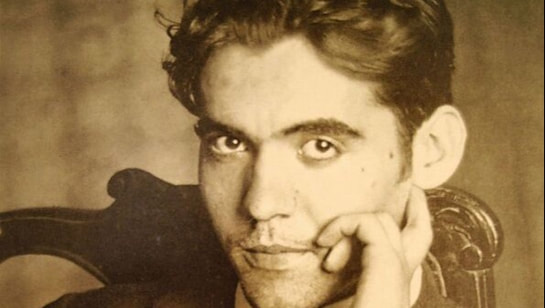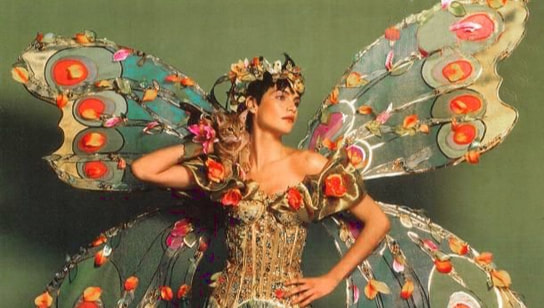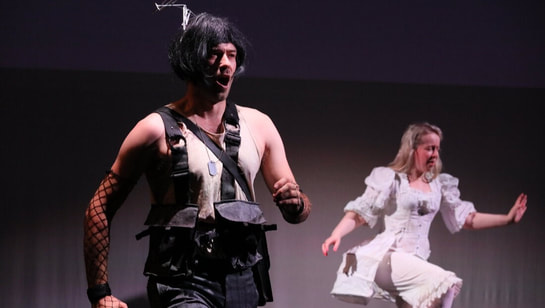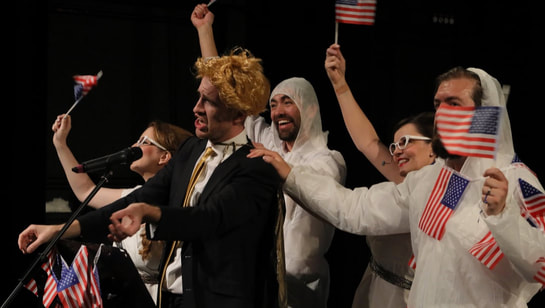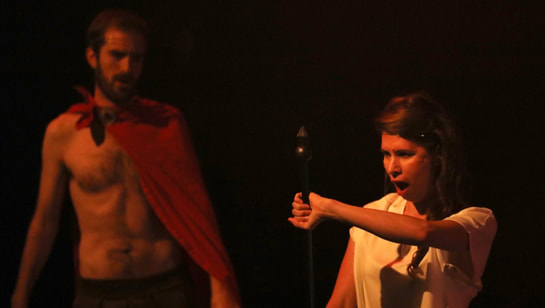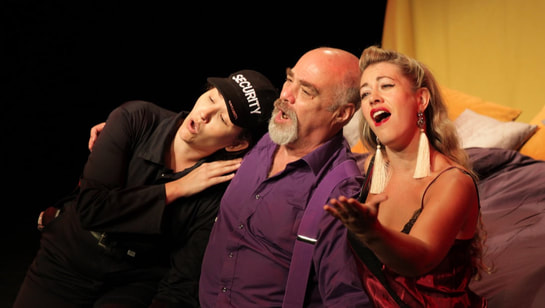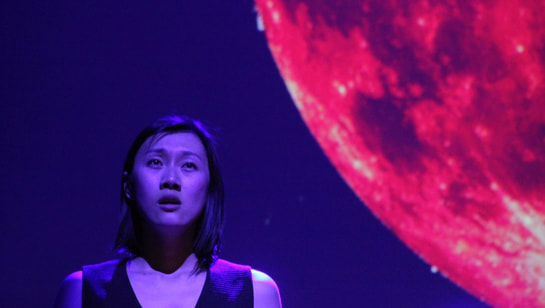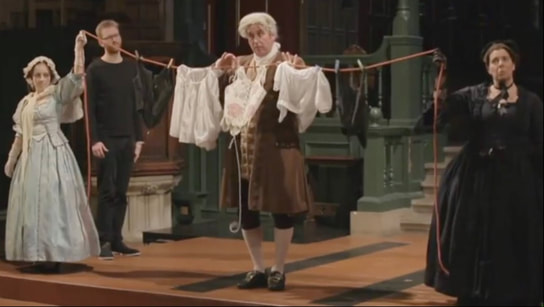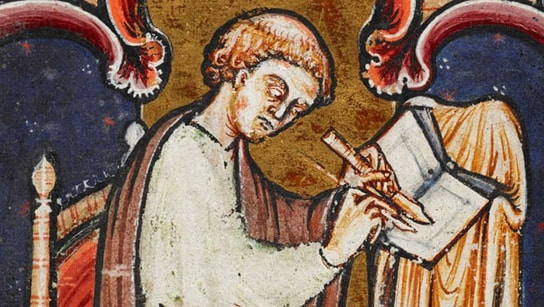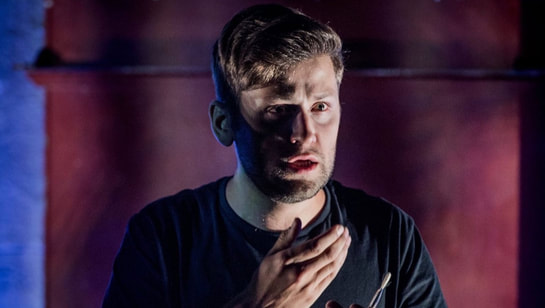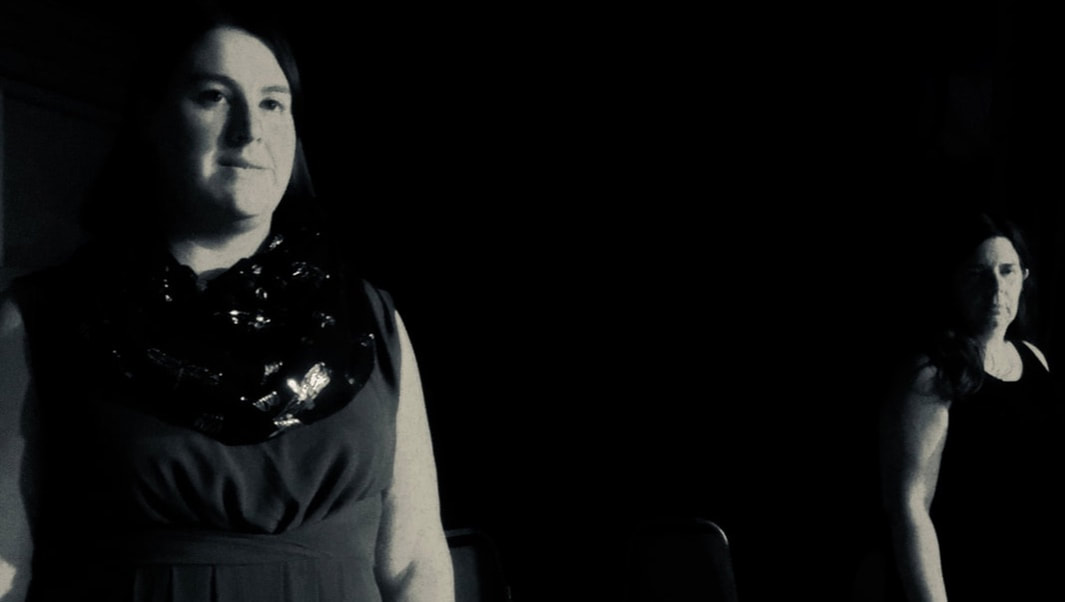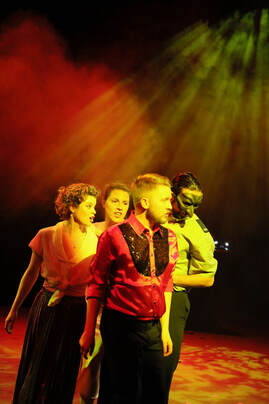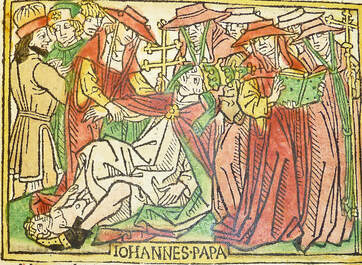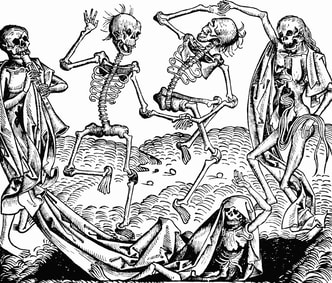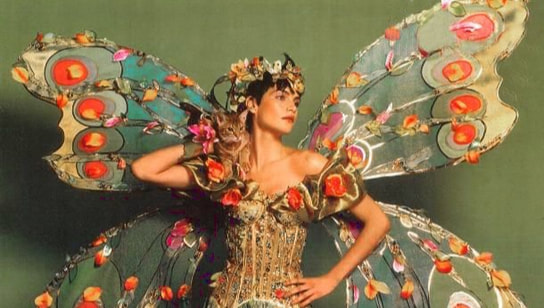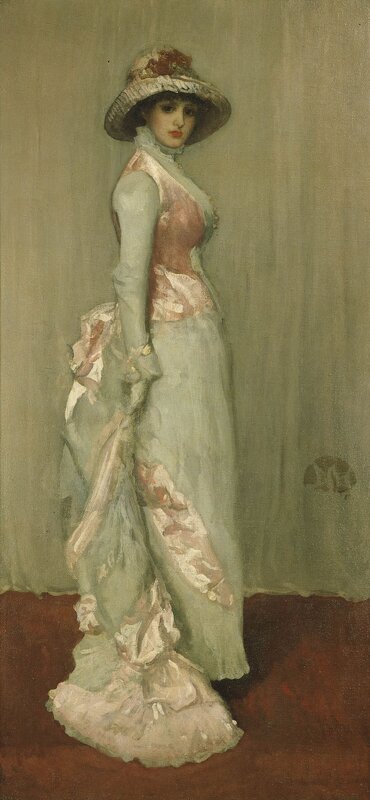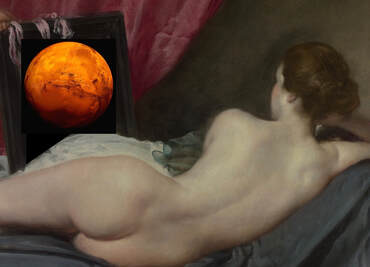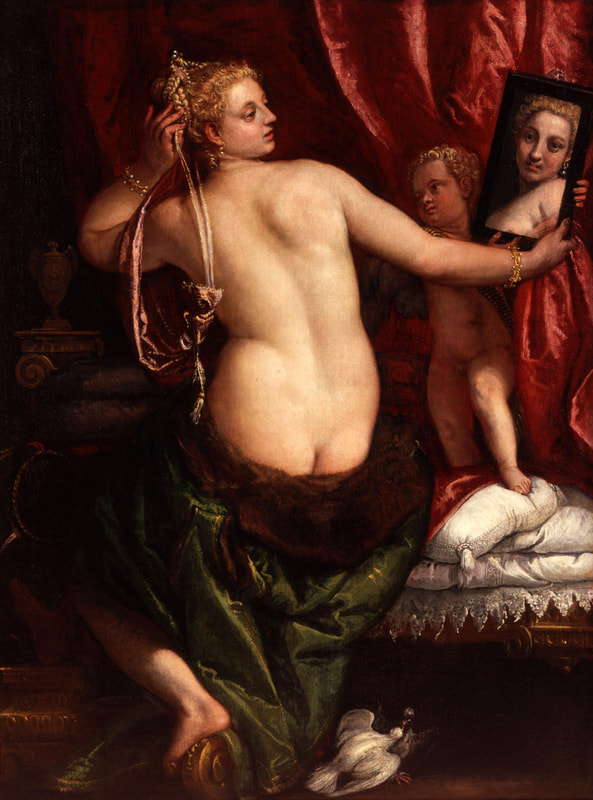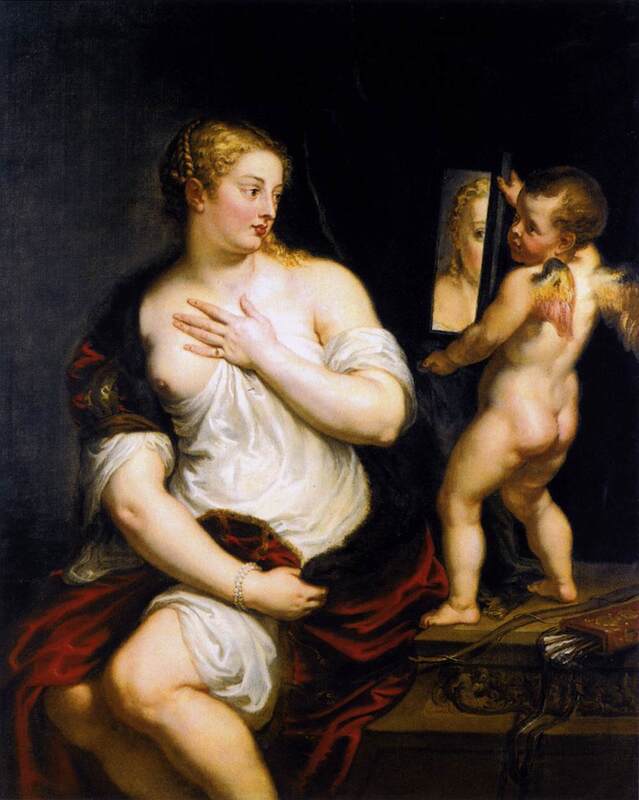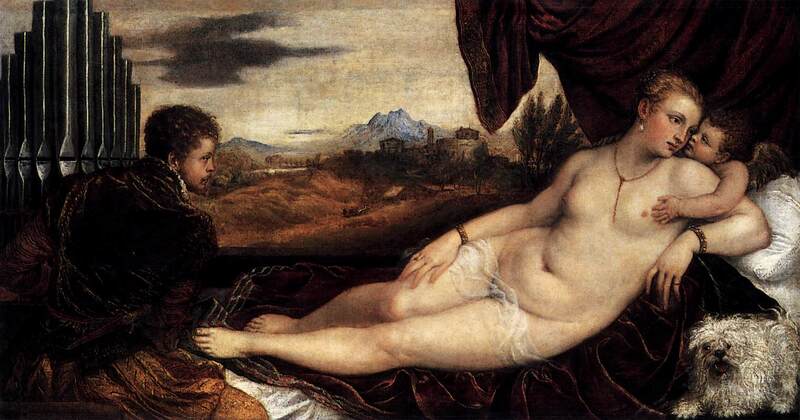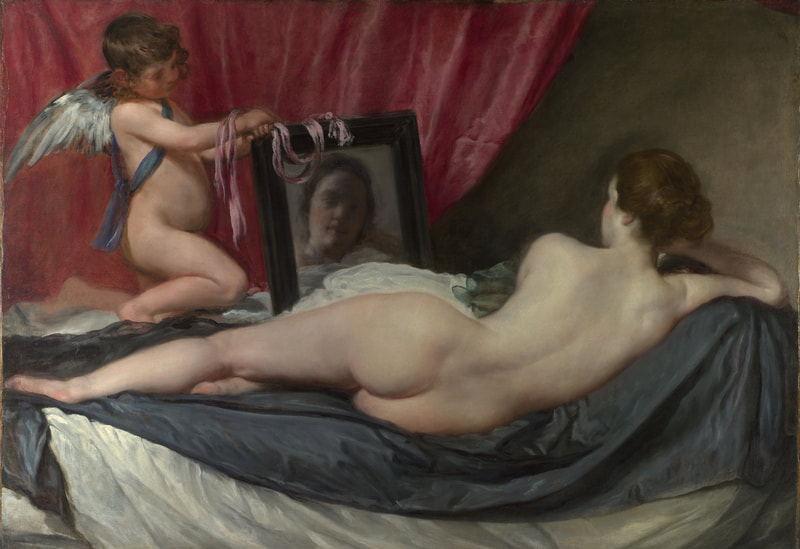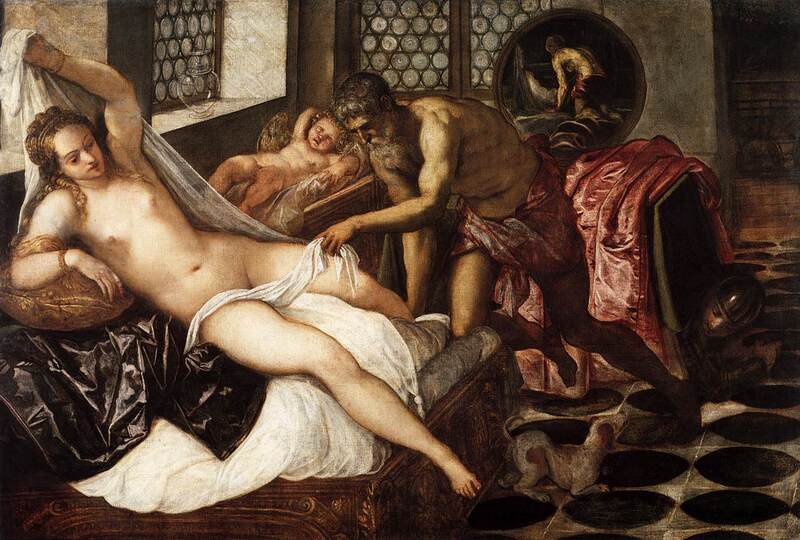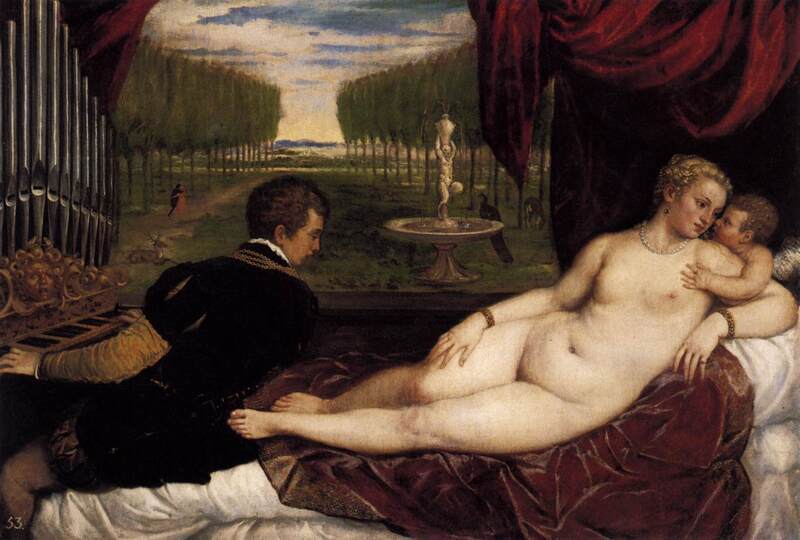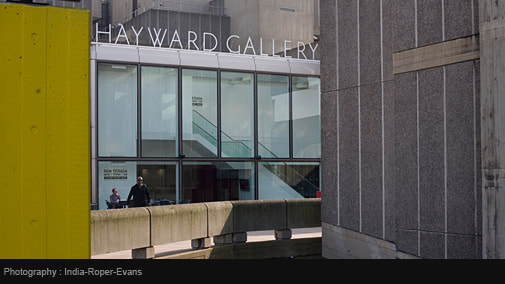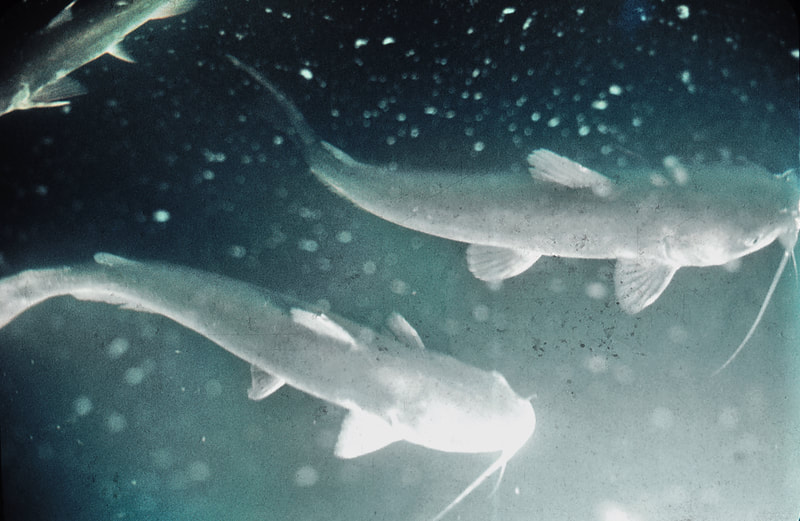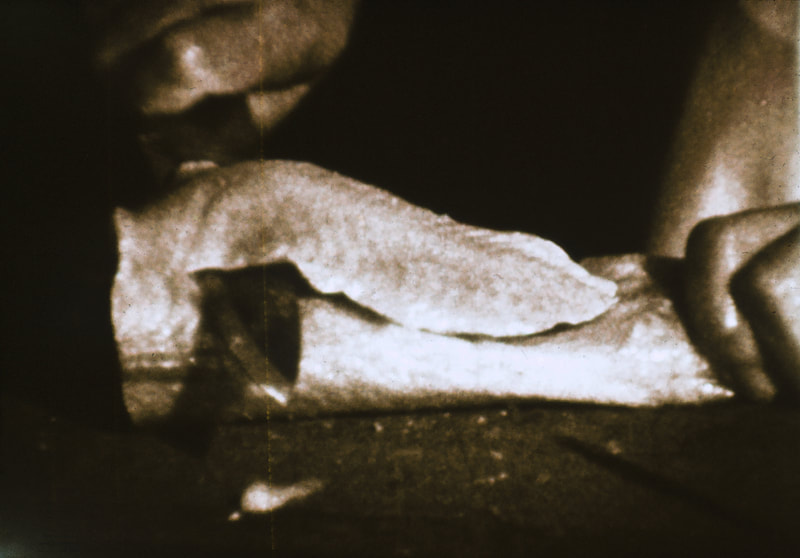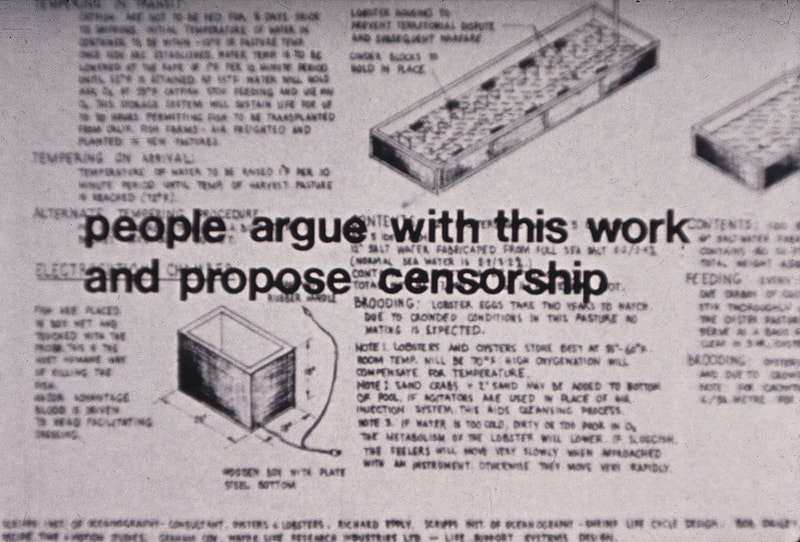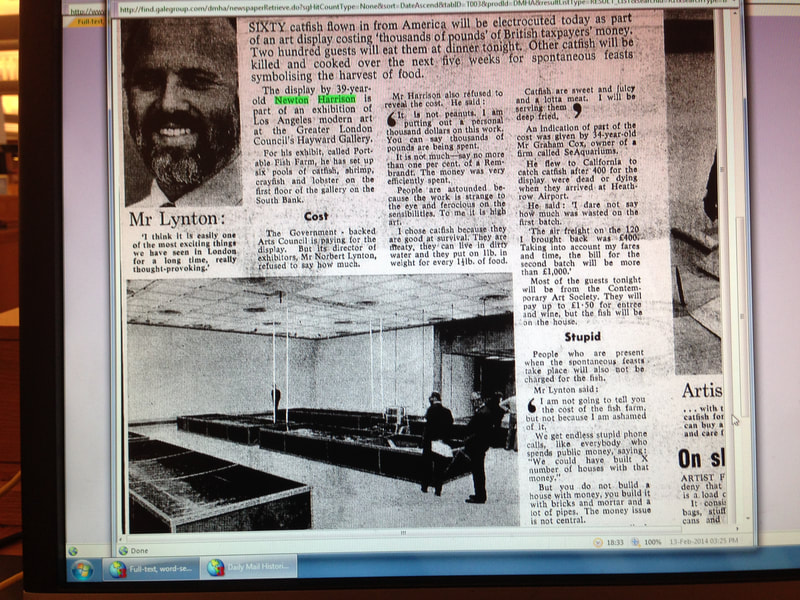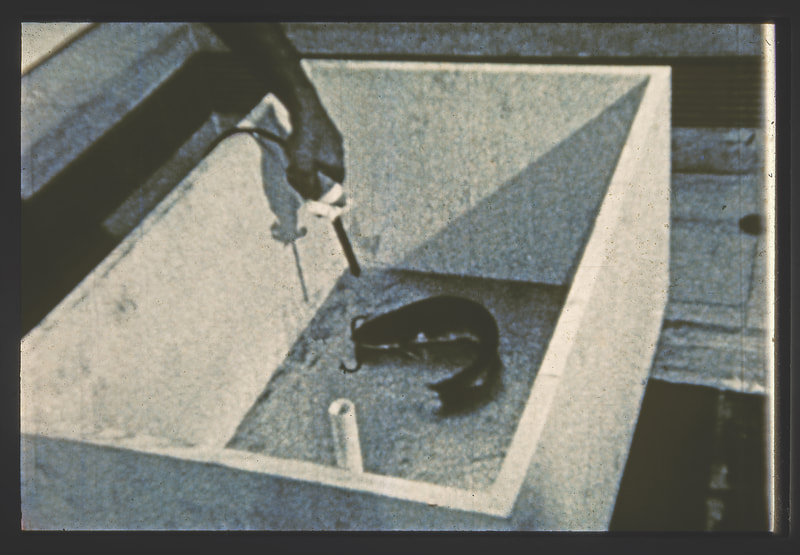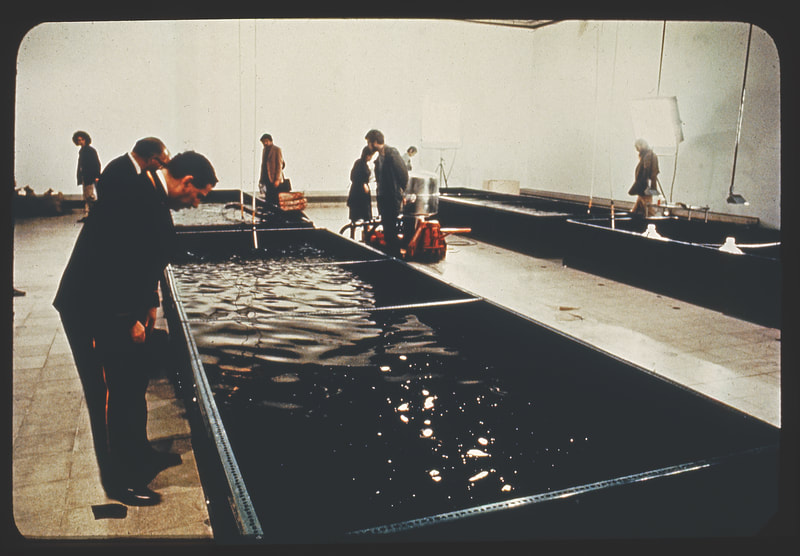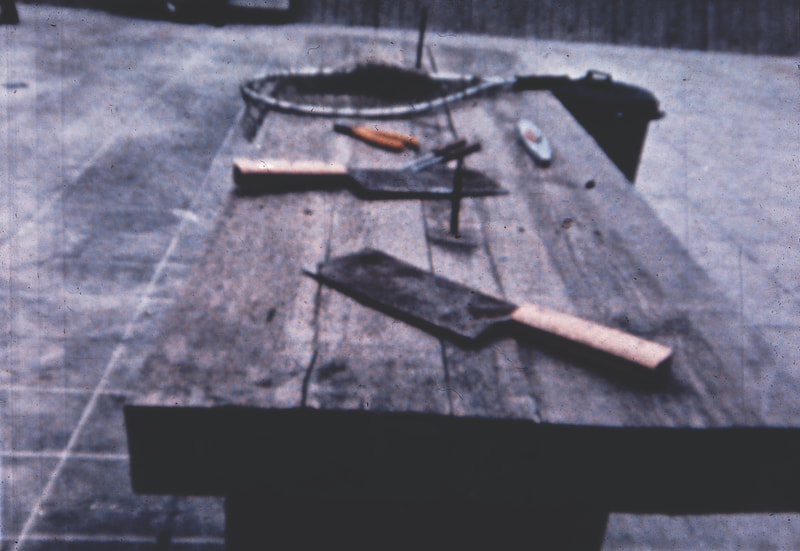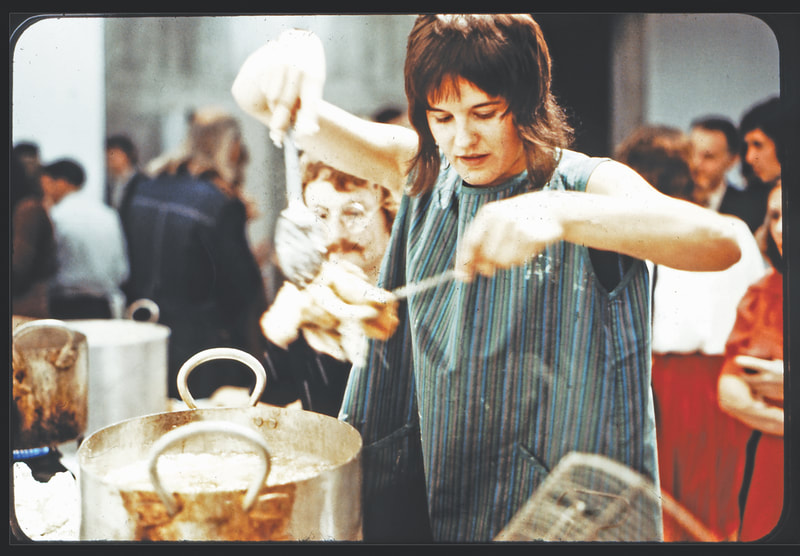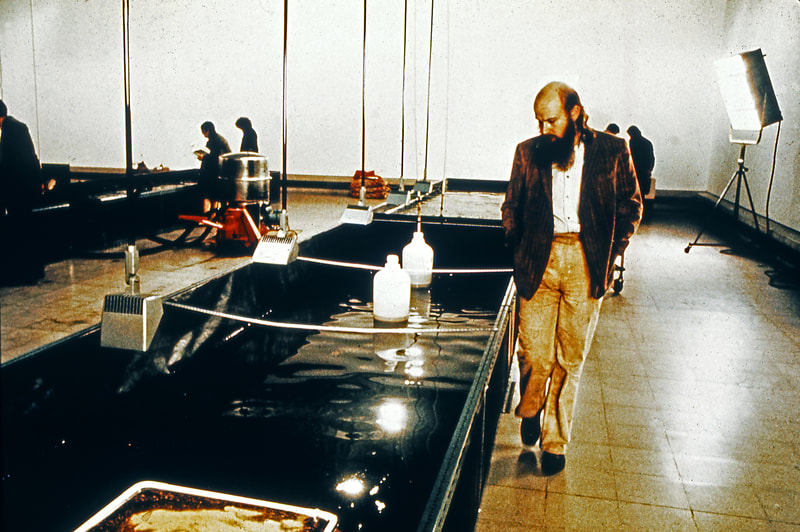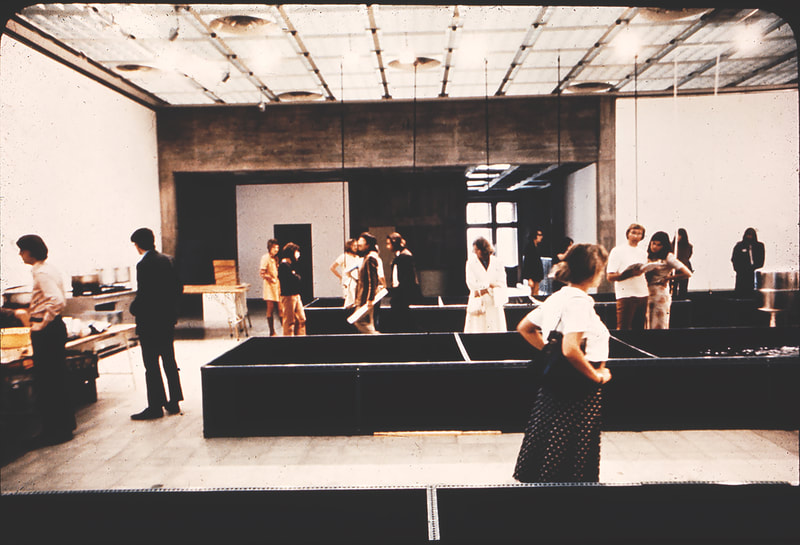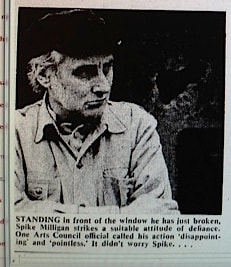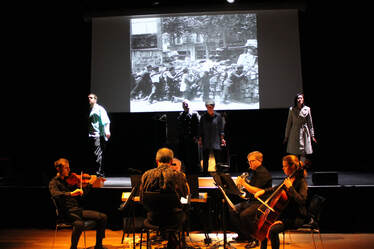chamber operas
A series of small-scale "dramas in song", some short, 'quirky' and topical, others adaptations of works
by Oscar Wilde, Lorca (6), Pirandello, Shelley, Middleton and Christopher Fry.
by Oscar Wilde, Lorca (6), Pirandello, Shelley, Middleton and Christopher Fry.
|
The Last Siren
In Ancient Greece, two sirens sing to passing sailors. Cast of 2 singers Viola, cello, 2 horns 35" At the Tête-à-Tête Festival, 31 August 2023 |
|
Masque of Vengeance
A criminal underworld imbued with lust, greed and murder. Adapted from The Revenger's Tragedy (1606) Cast of 9 singers Piano duet 1' 15" At The Cockpit, London November 2023 |
|
The Burning Question
A female pope in the afterlife gets stuck on the way to heaven. What did she do wrong? Cast of 4 singers Piano duet 40 minutes Produced by The Music Troupe 2022 & 2023 |
|
The Duchess of Padua
A 'grand' opera condensed from a Gothic tragedy by Oscar Wilde. Cast of 4 singers Piano duet 1'20" Produced by The Music Troupe February 2024 |
|
Last Party on Earth
In a post-apocalyptic dystopia, two clowns come across a self-partying queen. Cast of 3 singers Accordion Produced by The Music Troupe 2020 Filmed on location |
|
Apollo's Mission
The 50th anniversary of the moon landing: and Trump's in charge. Can the moon goddess get her revenge? Cast of 6 singers Clarinet, piano, percussion 50 minutes Produced by The Music Troupe 2019 |
|
The Art of Venus
Humankind is set on colonising Mars. But Venus is angry. Cast of 5 singers Ensemble of 4 players 35 minutes Produced by The Music Troupe 2017 |
|
The Cloak and Dagger Affair
The young wife of Don Perlimplin falls for a stranger: but who is he? From a play by Lorca. Cast of 3 singers Solo piano 40 minutes Produced by The Music Troupe 2018 |
|
Opera With A Title
A theatre company performs while war rages around them. Adapted from two plays by Lorca. Cast of 5 singers Ensemble of 4 players 50 minutes Produced by The Music Troupe 2015 |
|
The Catfish Conundrum
London, 1971: an Arts Council exhibition at the Hayward Gallery comes under scrutiny. Cast of 5 singers Violin, cello 40 minutes Produced by The Music Troupe 2014 & 2015 |
|
six characters in search of a stage
Adaptation of Pirandello's play. A family insist on staging their drama. Cast of 5 singers Ensemble of 5 players 55 minutes Produced by The Music Troupe 2014 |
|
Caedmon
Bede's account of the first English poet from a play by Christopher Fry. Cast of 6 singers + narrator Ensemble of 8 players 70 minutes Produced by the Royal Opera House at the Donmar Warehouse 1989 |
|
The Oval Portrait
A narrative opera from the tale by Edgar Allan Poe Cast of 5 voices Ensemble of 5 players 22 minutes Produced by The Music Troupe & Opera Box 2017 |
|
At The Hawk's Well
Chamber Opera or Dramatic Cantata by Edward Lambert (2024) adapted from the play by W. B. Yates Characters THE GUARDIANS OF THE WELL soprano S1 mezzo-soprano S2 counter-tenor (or contralto) A CUCHULAIN, a young warrior tenor T AN OLD MAN bass-baritone B THE HAWK dancer (optional) Instruments 2 oboes, 2 horns, strings, percussion (marimba & drums), harp |
The action takes place during the Irish Heroic Age. The Three Guardians of the Well conjure a scene of a parched mountainous landscape in which they attend a dried-up spring. An Old Man has been living by the well for fifty years in the hope of drinking the water for, when it flows, he who tastes it will gain eternal life. We learn that the stream has only ever appeared when he was asleep: three times he has woken to find the stones wet but the well dry. The young hero Cuchulain arrives on the scene possessing, in the optimism of youth, the ambition of finding immortality. Suddenly, the scream of a hawk is heard and its great wings cast a shadow. Cuchulain remarks that he saw the bird on his journey here; the Old Man recognises this as a sign that the water will soon flow. When the Guardians sing again, however, the Old Man is lulled to sleep. Cuchulain is entranced by the appearance of the Hawk only to realise when it vanishes that the water has been and gone and the Old Man has died. He resolves to stay and wait for immortality. The Guardians draw a moral from the tale: wisdom is granted to those that live humble lives and are content to face death.
|
Your browser does not support viewing this document. Click here to download the document.
|
|
The Last Siren
In Ancient Greece, two sirens have the job of seducing passing sailors and ensuring their destruction. But one of them finds love and, as Odysseus approaches, the tables are turned. An elegiac tale of nemesis - for two sopranos and an echo. Words: Norman Welch Music: Edward Lambert Cast DMITRA a siren, mezzo-soprano BELINDA a novice, soprano (ECHO pre-recorded by soprano) Instruments Viola(s), Cello(s), 2 Horns Duration: 33 minutes |
Dimitra is a siren-courtesan working from her territory on Sirens’ Rocks and is joined by a newcomer called Belinda, innocent and eager to succeed but at first unaware of her duties. She performs her sparkling audition piece, failing to impress Dimitra, who then demonstrates the art of seduction by singing voluptuously to a passing captain; we subsequently hear the crashing of a ship hitting the rocks. Then, brandishing a knife, she goes off to dismember her victim and returns triumphant a few moments later. Belinda is aghast that the gods have tasked her to carry out such dreadful deeds. Prompted by her Echo, she is inspired to sing a different song as a veiled warning to the next ship that approaches. However, she has such a beautiful voice that her singing has the opposite effect to that intended. Again, the ship crashes, Belinda falls into the captain’s arms - and finds love. As Dimitra has already warned her, Fate now condemns her to a painful death: she is The Doomed Siren. But first, as Odysseus’ ship is sighted, both girls vie with each other, Dimitra to entice the hero onto the island, Belinda to ward him off. When the contest gets violent, Belinda seizes Dimitra’s knife and kills her. As Odysseus sails past, Belinda is left to perish alone.
|
Masque of Vengeance
|
text adapted by the composer from The Revenger's Tragedy by Thomas Middleton (1606)
Characters VINDICIO, the revenger, returned from exile sometimes disguised as CARIA, a procuress - mezzo-soprano (A1) VIRGINIA, his sister - soprano (S2) GRATIANA, their widowed mother - contralto (A2) THE 'KING', an elderly tyrant also SINGER AT THE BANQUET - baritone (B1) THE 'DUCHESS', his new wife - soprano (S1) 'PRINCE' LUSSURIOSO, the Kings's son & heir by a previous marriage - counter-tenor (CT) SPURIO, the King's illegitimate son by an unknown woman - tenor (T1) VACUO, the Duchess's son by a previous marriage - tenor (T2) 'LORD' ANTONIO, a gentleman - bass-baritone (B2) Choruses of distant voices (pre-recorded by the cast) Scene: a land of corruption and vice in any time period Accompaniment: piano duet (one piano, four hands) (+ pre-recorded percussion backing track in Scene 11) Duration: 75 minutes (interval optional) |
The story portrays a criminal regime full of rivalry, lust and murder.
(Scene 1) Vindicio (played by a mezzo-soprano) is a guy who's on the run. He has with him the death mask of his fiancée. The King murdered her and violated her corpse. Vindicio's mother, Gratiana, was widowed and along with his sister, Virginia, reduced to poverty. Vindicio plots revenge on the King's regime.
(Scene 2) Antonio is a senior courtier whose daughter has killed herself following her rape by Vacuo. At his trial, the King cynically condemns his stepson's behaviour but defers the death sentence and remands him in custody, much to the dismay of the Duchess, whose favourite child he is, and of Antonio, who wants justice for his daughter.
(Scene 3) Vindicio spends much of the drama disguised as a madam procuress called Caria, who is sought out by the Prince to engage a local girl whom he lusts over. This turns out to be Vindicio's sister, Virginia.
(Scene 4) Vindicio - as Caria - goes to the house of his mother and sister and, testing them, tries to persuade Virginia to yield to the Prince's lust. Horrified at first, Gratiana soon sees this liaison as a way out of poverty. Virginia, however, will have none of it. Vindicio rejoices at his sister's purity.
(Scene 5) The Duchess, angry at being sidelined by the King, starts an affair with Spurio, the King's bastard son, who's ambitious for the crown. Vindicio spies them together.
(Scene 6) Vindicio (still as Caria) reports back to the Prince who is eager to bed Virginia. Vindicio diverts his attention by mentioning the affair between the Duchess and Spurio. The Prince rushes to the Duchess's bedroom with sword drawn - but finds only the King in bed with her. The ensemble expresses shock and horror. The Prince is arrested for treason and borne away to prison. Antonio is given the King's signet ring as authority for the Prince's execution.
(Scene 7) Vindicio again confronts Gratiana, but this time as himself. When she repents of wanting to sell her daughter, Vindicio forgives her.
(Scene 8) Accompanied by the sound of distant choral singing, Antonio uses the authority granted by the King to kill Vacuo - rather than the Prince - in his prison cell, in revenge for the death of his daughter. Vacuo dies unrepentant.
(Scene 9) The King has decided he needs a new adventure and has employed Caria to fetch him a girl. He's coming to an assignation in a suitably dark cemetery where Vindicio is setting a trap for him.
'Caria' is assisted by Virginia and Gratiana who have become co-conspirators. Virginia is dressed up for the kill.
To the death mask of Vindicio's fiancée, the trio apply poison on its lips. Virginia puts on the death mask and when the King arrives he attempts to kiss her. He tastes the poison and lies dying while Vindicio reveals his true identity.
The Duchess and Spurio meet nearby for their sexual encounter. As a final humiliation, Vindicio forces the King to watch them and then, having cut out his tongue, stabs him to finish him off.
(Scene 10) Taking off his disguise, Vindicio dresses the King's corpse in Caria's clothes. The Prince arrives celebrating his release from prison and wanting Caria killed because of the trick she played on him. He employs Vindicio for the job (not knowing they are one and the same) so Vindicio pretends to kill the sleeping Caria. The Prince is concerned to find that the corpse is not Caria's but that of the King.
Others arrive on the scene. 'Caria' is implicated in the King's murder for it appears "she" must have carried out the crime and fled in the King's clothes. To everyone's relief, the Prince is proclaimed the new king and festivities are ordered.
(Scene 11) While the Prince's "coronation" is in progress, Virginia prepares to participate in the final act of vengeance. The company dance a masque during which the Prince's throat is cut. Spurio proclaims himself king but the dying Prince draws a pistol and shoots him dead. Vindicio now hails Antonio as the new ruler and boasts about killing the old King. Antonio declares, "You that would murder him would murder me!" and runs his sword through Vindicio.
- The ruler, known as the 'King', has a son by a previous marriage called 'Prince' Lussurioso, the heir to the empire.
- The King also has an illegitimate son called Spurio.
- The King's new wife, the 'Duchess', has a son from her previous marriage called Vacuo.
(Scene 1) Vindicio (played by a mezzo-soprano) is a guy who's on the run. He has with him the death mask of his fiancée. The King murdered her and violated her corpse. Vindicio's mother, Gratiana, was widowed and along with his sister, Virginia, reduced to poverty. Vindicio plots revenge on the King's regime.
(Scene 2) Antonio is a senior courtier whose daughter has killed herself following her rape by Vacuo. At his trial, the King cynically condemns his stepson's behaviour but defers the death sentence and remands him in custody, much to the dismay of the Duchess, whose favourite child he is, and of Antonio, who wants justice for his daughter.
(Scene 3) Vindicio spends much of the drama disguised as a madam procuress called Caria, who is sought out by the Prince to engage a local girl whom he lusts over. This turns out to be Vindicio's sister, Virginia.
(Scene 4) Vindicio - as Caria - goes to the house of his mother and sister and, testing them, tries to persuade Virginia to yield to the Prince's lust. Horrified at first, Gratiana soon sees this liaison as a way out of poverty. Virginia, however, will have none of it. Vindicio rejoices at his sister's purity.
(Scene 5) The Duchess, angry at being sidelined by the King, starts an affair with Spurio, the King's bastard son, who's ambitious for the crown. Vindicio spies them together.
(Scene 6) Vindicio (still as Caria) reports back to the Prince who is eager to bed Virginia. Vindicio diverts his attention by mentioning the affair between the Duchess and Spurio. The Prince rushes to the Duchess's bedroom with sword drawn - but finds only the King in bed with her. The ensemble expresses shock and horror. The Prince is arrested for treason and borne away to prison. Antonio is given the King's signet ring as authority for the Prince's execution.
(Scene 7) Vindicio again confronts Gratiana, but this time as himself. When she repents of wanting to sell her daughter, Vindicio forgives her.
(Scene 8) Accompanied by the sound of distant choral singing, Antonio uses the authority granted by the King to kill Vacuo - rather than the Prince - in his prison cell, in revenge for the death of his daughter. Vacuo dies unrepentant.
(Scene 9) The King has decided he needs a new adventure and has employed Caria to fetch him a girl. He's coming to an assignation in a suitably dark cemetery where Vindicio is setting a trap for him.
'Caria' is assisted by Virginia and Gratiana who have become co-conspirators. Virginia is dressed up for the kill.
To the death mask of Vindicio's fiancée, the trio apply poison on its lips. Virginia puts on the death mask and when the King arrives he attempts to kiss her. He tastes the poison and lies dying while Vindicio reveals his true identity.
The Duchess and Spurio meet nearby for their sexual encounter. As a final humiliation, Vindicio forces the King to watch them and then, having cut out his tongue, stabs him to finish him off.
(Scene 10) Taking off his disguise, Vindicio dresses the King's corpse in Caria's clothes. The Prince arrives celebrating his release from prison and wanting Caria killed because of the trick she played on him. He employs Vindicio for the job (not knowing they are one and the same) so Vindicio pretends to kill the sleeping Caria. The Prince is concerned to find that the corpse is not Caria's but that of the King.
Others arrive on the scene. 'Caria' is implicated in the King's murder for it appears "she" must have carried out the crime and fled in the King's clothes. To everyone's relief, the Prince is proclaimed the new king and festivities are ordered.
(Scene 11) While the Prince's "coronation" is in progress, Virginia prepares to participate in the final act of vengeance. The company dance a masque during which the Prince's throat is cut. Spurio proclaims himself king but the dying Prince draws a pistol and shoots him dead. Vindicio now hails Antonio as the new ruler and boasts about killing the old King. Antonio declares, "You that would murder him would murder me!" and runs his sword through Vindicio.
|
Your browser does not support viewing this document. Click here to download the document.
|
Attended by a roguish demon and a guardian angel, the female Pope has died. She now wants nothing less than a cosy retirement in paradise, but Someone has other ideas and the elevator going upwards gets stuck. It's a Day of Wrath! Will Pietro, the Caretaker, be able to fix it? What is it that he knows? Accompanied by piano duet and a choir of heavenly voices, this is a satire that confronts the ridiculous, the sublime, love, death and comic opera all at the same time.
“Pope Francis has said he got stuck in a lift for 25 minutes at the Vatican and had to be rescued by firefighters. The pontiff apologised to the faithful gathered in St Peter’s Square on Sunday for showing up seven minutes late to his traditional noon appointment with the public. Apparently referring to electric power, Francis said a “drop in tension” caused the problem. He said he was rescued by Holy See firefighters and asked the people in the square to applaud them.” (The Guardian, 01/09/2019)
A comic opera - with an Italian hue
On Sunday 1st September 2019, the lift carrying Pope Francis to the Papal balcony got stuck. In the opera, this incident becomes a Dantesque dilemma concerning the destination of the soul. In this case, the Pope, now dead, is female. “She’s done some mighty good by cleansing the Church as only a woman could” - and so she’s now destined to carry on the good work in Hell. Ignacio, the demon valet, Hades’ son, is worried how daddy will react to a woman in charge. In any case, the Pope refuses the offer, but this begs the question - why is the lift not taking her skywards? It takes a visit from St Peter to sort things out: it’s revealed that the Pope had a son from an affair with the Goddess of the Underworld... now a lusty young man, Ignacio’s desire for Arianna, the chambermaid, must produce the sparks that will ignite the cleansing fire of Purgatory.
“Pope Francis has said he got stuck in a lift for 25 minutes at the Vatican and had to be rescued by firefighters. The pontiff apologised to the faithful gathered in St Peter’s Square on Sunday for showing up seven minutes late to his traditional noon appointment with the public. Apparently referring to electric power, Francis said a “drop in tension” caused the problem. He said he was rescued by Holy See firefighters and asked the people in the square to applaud them.” (The Guardian, 01/09/2019)
A comic opera - with an Italian hue
On Sunday 1st September 2019, the lift carrying Pope Francis to the Papal balcony got stuck. In the opera, this incident becomes a Dantesque dilemma concerning the destination of the soul. In this case, the Pope, now dead, is female. “She’s done some mighty good by cleansing the Church as only a woman could” - and so she’s now destined to carry on the good work in Hell. Ignacio, the demon valet, Hades’ son, is worried how daddy will react to a woman in charge. In any case, the Pope refuses the offer, but this begs the question - why is the lift not taking her skywards? It takes a visit from St Peter to sort things out: it’s revealed that the Pope had a son from an affair with the Goddess of the Underworld... now a lusty young man, Ignacio’s desire for Arianna, the chambermaid, must produce the sparks that will ignite the cleansing fire of Purgatory.
Concerning a certain Pope or rather female Pope, who is not set down in the list of popes or Bishops of Rome, because she was a woman who disguised herself as a man and became, by her character and talents, a curial secretary, then a Cardinal and finally Pope. One day, [in 1099], while mounting a horse, she gave birth to a child. Immediately, by Roman justice she was bound by the feet to a horse's tail and dragged and stoned by the people for half a league, and, where she died, there she was buried, and at the place is written: "Petre, Pater Patrum, Papisse Prodito Partum" [Oh Peter, Father of Fathers, Betray the childbearing of the woman Pope]. At the same time, the four-day fast called the "fast of the female Pope" was first established.
— Jean de Mailly, Chronica Universalis Mettensis [from Wikipedia]
Pope John VIII: John, of English extraction, was born at Mentz (Mainz) and is said to have arrived at popedom by evil art; for disguising herself like a man, whereas she was a woman, she went when young with her paramour, a learned man, to Athens, and made such progress in learning under the professors there that, coming to Rome, she met with few that could equal, much less go beyond her, even in the knowledge of the scriptures; and by her learned and ingenious readings and disputations, she acquired so great respect and authority that upon the death of Pope Leo IV (as Martin says) by common consent she was chosen pope in his room. As she was going to the Lateran Church between the Colossean Theatre (so called from Nero's Colossus) and St. Clement's her travail came upon her, and she died upon the place, having sat two years, one month, and four days, and was buried there without any pomp.
- Bartolomeo Platina, 1479
Pope Joan giving birth - Woodcut, Ulm, 1479
Swellfellow the Tyrantadopted from a play by Percy Bysshe Shelley
Small-scale, choral opera (2022) - designed for community involvement with several roles suitable for non-professional singers. Heading a regime that hosts slavery, industrial exploitation, inequality and an unfair voting system — King Swellfellow is a tyrannical dictator who gorges himself while his subjects starve. Can he and his sleazy ministers cling to power when the Countess returns from exile? And whose side will the Press be on? Still pertinent today 200 years after it was written, Shelley's satire is here made into an opera which is as comic as it is bizarre Shelley's play, "translated from the original Doric," is a fantasy satire on the political crises of 1820 which tore apart a deeply divided and unequal country. The death of George III and the return of Caroline as Queen became a rallying call for the reform movement. But this was thwarted by a reactionary establishment, even more entrenched following the Peterloo Massacre the previous year which inspired Shelley's famous poem The Masque of Anarchy. In the play, Shelley goes further and advocates the overthrow by the working class of the monarchy and the whole political system. The politics, however, are clothed in fun, wit and topsy-turviness, depicting a conflict between oppressed animals and human overlords. |
Cast of 8 - 10 singers + chorus + 7 instrumentalists
1'20" + interval Act I - 45 minutes Act II - 35 minutes In his palatial garden, the tyrant King Swellfellow admires his corpulent figure, but the working class 'Swine' who serve him are oppressed and starving. His Ministers discuss the deteriorating situation in the country. An Oracle has spoken; the exiled Countess is expected to return as the rightful Queen and the Swine are already rallying to her cause. The Spin Doctor employs paparazzi to gather sleaze on the Countess and to spread fake news; its vitriol is to be released during a divining ceremony held ostensibly to demonstrate her virtue to the public but intended by the Ministers to prove her guilty of a trumped-up charge. However, at the Ceremony of Famine, the paparazzi produce a dossier of establishment corruption whereupon the King and his courtiers are transformed into vermin and flee. Out of the chaos Joan Bull, the Minotaurina, appears whom the Countess mounts to lead the Swine in pursuit of their erstwhile oppressors.ere to edit. |
Characters
The Poet
PERCY BYSSHE SHELLEY (professional tenor)
The Monarchy
COUNTESS EUROPA, rightful Queen (professional soprano)
KING SWELLFELLOW, Dictator (bass)
The Ministers of State
BISHOP SINLESS, Person of Religion (soprano)
DAME SPOUTING, Doctor of Spin (mezzo-soprano)
LORD SHEDLOADS, Chief Whip (tenor)
The Press
A GADFLY, tabloid journalist (male character) (soprano)
TWO ASSISTANT GADFLIES (mezzo & alto)
The Mythology
JOAN BULL, the Minotaurina (contralto)
VOICE OF THE ORACLE (off) (child's voice)
CHORUS of Swine, Paparazzi, Boar Lords, Sty-Wives
Instruments
2 Violins
2 Horns in F
Percussion - marimba (5 octave), 5 assorted drums (bass to high), tam-tam, suspended cymbal, triangle, 5 temple blocks, whip
Accordion (classical button instrument with converter bass)
Piano
The Poet
PERCY BYSSHE SHELLEY (professional tenor)
The Monarchy
COUNTESS EUROPA, rightful Queen (professional soprano)
KING SWELLFELLOW, Dictator (bass)
The Ministers of State
BISHOP SINLESS, Person of Religion (soprano)
DAME SPOUTING, Doctor of Spin (mezzo-soprano)
LORD SHEDLOADS, Chief Whip (tenor)
The Press
A GADFLY, tabloid journalist (male character) (soprano)
TWO ASSISTANT GADFLIES (mezzo & alto)
The Mythology
JOAN BULL, the Minotaurina (contralto)
VOICE OF THE ORACLE (off) (child's voice)
CHORUS of Swine, Paparazzi, Boar Lords, Sty-Wives
Instruments
2 Violins
2 Horns in F
Percussion - marimba (5 octave), 5 assorted drums (bass to high), tam-tam, suspended cymbal, triangle, 5 temple blocks, whip
Accordion (classical button instrument with converter bass)
Piano
Act One
The garden of the King's palace.
A turbulent Prologue depicts the cruelty of the Tyrant. His 'Swinish slaves' prepare a feast for him and he loses no opportunity to maltreat them as they serve up exotic dishes.
At the same time, the figure of the poet Shelley appears in a vision, inspired by the events of Peterloo to write the poem The Masque of Anarchy in which it is revealed that members of the Establishment are the destabilising Anarchists.
The Chorus of Swine bemoan their terrible conditions; they are weak and starving, a policy of the Establishment to keep them subdued. As they sing, they become angry, citing the law. This angers Swellfellow, who sends them away. He admires himself in a mirror, then falls asleep.
Shedloads and Sinless discuss the situation in the country. Shedloads is scared by recent unrest and the pronouncement of the Oracle has worried him. Spouting, the Doctor of Spin, enters and reassures them that it was she who invented the Oracle, probably when drunk. Shedloads reminds them of its words "when on Famine's throne the Minotaur shall arise" - an unlikely event, indeed, says Spouting.
Shelley recounts how Anarchy is on the march.
Spouting attempts to put some 'spin' on the Oracle. A tabloid journalist in the shape of a venomous Gadfly is in her
pay. On cue, the Gadfly appears with a Chorus of Paparazzi. They sing of their poisonous practices and fly off.
Swellfellow wakes up; he's had nasty dream of the Countess returning to power and orders his ministers to dispose of her. They devise a plan to 'divide and rule' by favouring some pigs over others; their scheming is overlaid with verses from Shelley about the exploitation of the poor and destitute.
The Boar Lords enter for their council meeting. They attempt to defend the Countess who has been accused of - well, no-one seems to know. Spouting puts before them a plan to subject her to a test in a Divining Ceremony to demonstrate her innocence. He produces the sleaze-sack whose contents of feed, he assures them, will transform the Countess into an angel. The Boars are taken in and engage in poetic raptures as they imagine the Countess flying above them.
A Chorus of Sty-wives force their way into the chamber. They're wary of this scheme and propose that the same test should apply to the King as well. This is agreed; the Swine suppose the Countess will become an angel and the King a demon, while the Ministers believe they can fix things to ensure the opposite will happen. Suddenly, the sky clouds over and the Voice of the Oracle booms out. Amen! say all, as the sun comes out again.
Act Two
The Temple of Famine with statue of the goddess over the altar.
As if in a sacred ritual, the Gadfly and two assistants prepare the sleaze-sack. Their magic can make an innocent being look guilty. However, they also prepare a second sack...
Spouting tells Sinless and Shedloads that in the forthcoming Ceremony of Famine the Gadfly will act on their behalf: the contents of the sack are to turn the Countess into an ugly creature whom the Swine will cast off.
Shelley describes how a powerful resolve for change makes itself felt within the community.
A Danse Macabre accompanies preparations for the Feast of Famine. The skeletal statue is unveiled. The King and Ministers process in, followed by the Countess who radiates confidence and hope for the Swine. Her singing sets the crowd ablaze.
The Countess agrees to undertake the test. An ensemble ensues. Swellfellow is troubled. The Ministers pray that their system survives intact. The Swine hope for some levelling up.
The Gadfly is about to present the dossier on the Countess when she suddenly switches it for evidence against the King and his Ministers; the contents are distributed for all to see. As the shocked Swine digest this information, the members of Swellfellow's establishment turn into filthy and ugly vermin and flee for their lives while the Swine become human.
As the Statue of Famine crumbles, the Minotaurina rises in its place. The Countess mounts her and they ride off in triumphant pursuit of their oppressors.
Shelley describes how, in his vision, with Anarchy dead, Hope was rekindled and the population urged to rise up in peaceful protest.
The garden of the King's palace.
A turbulent Prologue depicts the cruelty of the Tyrant. His 'Swinish slaves' prepare a feast for him and he loses no opportunity to maltreat them as they serve up exotic dishes.
At the same time, the figure of the poet Shelley appears in a vision, inspired by the events of Peterloo to write the poem The Masque of Anarchy in which it is revealed that members of the Establishment are the destabilising Anarchists.
The Chorus of Swine bemoan their terrible conditions; they are weak and starving, a policy of the Establishment to keep them subdued. As they sing, they become angry, citing the law. This angers Swellfellow, who sends them away. He admires himself in a mirror, then falls asleep.
Shedloads and Sinless discuss the situation in the country. Shedloads is scared by recent unrest and the pronouncement of the Oracle has worried him. Spouting, the Doctor of Spin, enters and reassures them that it was she who invented the Oracle, probably when drunk. Shedloads reminds them of its words "when on Famine's throne the Minotaur shall arise" - an unlikely event, indeed, says Spouting.
Shelley recounts how Anarchy is on the march.
Spouting attempts to put some 'spin' on the Oracle. A tabloid journalist in the shape of a venomous Gadfly is in her
pay. On cue, the Gadfly appears with a Chorus of Paparazzi. They sing of their poisonous practices and fly off.
Swellfellow wakes up; he's had nasty dream of the Countess returning to power and orders his ministers to dispose of her. They devise a plan to 'divide and rule' by favouring some pigs over others; their scheming is overlaid with verses from Shelley about the exploitation of the poor and destitute.
The Boar Lords enter for their council meeting. They attempt to defend the Countess who has been accused of - well, no-one seems to know. Spouting puts before them a plan to subject her to a test in a Divining Ceremony to demonstrate her innocence. He produces the sleaze-sack whose contents of feed, he assures them, will transform the Countess into an angel. The Boars are taken in and engage in poetic raptures as they imagine the Countess flying above them.
A Chorus of Sty-wives force their way into the chamber. They're wary of this scheme and propose that the same test should apply to the King as well. This is agreed; the Swine suppose the Countess will become an angel and the King a demon, while the Ministers believe they can fix things to ensure the opposite will happen. Suddenly, the sky clouds over and the Voice of the Oracle booms out. Amen! say all, as the sun comes out again.
Act Two
The Temple of Famine with statue of the goddess over the altar.
As if in a sacred ritual, the Gadfly and two assistants prepare the sleaze-sack. Their magic can make an innocent being look guilty. However, they also prepare a second sack...
Spouting tells Sinless and Shedloads that in the forthcoming Ceremony of Famine the Gadfly will act on their behalf: the contents of the sack are to turn the Countess into an ugly creature whom the Swine will cast off.
Shelley describes how a powerful resolve for change makes itself felt within the community.
A Danse Macabre accompanies preparations for the Feast of Famine. The skeletal statue is unveiled. The King and Ministers process in, followed by the Countess who radiates confidence and hope for the Swine. Her singing sets the crowd ablaze.
The Countess agrees to undertake the test. An ensemble ensues. Swellfellow is troubled. The Ministers pray that their system survives intact. The Swine hope for some levelling up.
The Gadfly is about to present the dossier on the Countess when she suddenly switches it for evidence against the King and his Ministers; the contents are distributed for all to see. As the shocked Swine digest this information, the members of Swellfellow's establishment turn into filthy and ugly vermin and flee for their lives while the Swine become human.
As the Statue of Famine crumbles, the Minotaurina rises in its place. The Countess mounts her and they ride off in triumphant pursuit of their oppressors.
Shelley describes how, in his vision, with Anarchy dead, Hope was rekindled and the population urged to rise up in peaceful protest.
IN FIVE YEAR’S TIME
After Así que pasen cinco años by Federico Garcia Lorca (1931)
Lorca’s poetic drama is in thrall to a surreal dream-world: his friends Salvator Dali and Luis Buñuel had collaborated in the making of Un Chien Andalou (1929) and Lorca was experimenting to see how surrealism could translate into theatre. The play explores themes of frustrated love, personal identity, decay and death; yet it does so in the manner of a fairy tale, clothed in fun and topsy-turviness. It confuses the nature of time and reality and, in the process, examines the illusion of theatre. This operatic version is a free translation and adaptation of Lorca's text.
Duration: approx. 75 minutes
Scene 1 In Belisa’s dressing room, the mannequin carrying her wedding dress is pining for it to be worn.
Overture
Scene 2 In his library, Federico, a writer, talks with Fernando, an old friend who, as a philosopher and astronomer, represents Time Past. Federico explains he has put off his marriage to Belisa for five years. Rosita, his secretary, appears briefly and seems to be upset.
Scene 3 A mortuary: a child explains to a dead cat what it was like to die.
Scene 4 In a forest, three clowns from a player troupe sing and dance.
Scene 5 Belisa has another, more passionate lover and calls off her engagement to Federico; the mannequin is distraught.
Scene 6 Back in the library, Federico's friend Juan (Time Present) boasts of his sexual conquests and gets increasingly drunk. Another friend, Pedro (Time Future), enters in a morbid mood. Rosita, angry now, announces that she's leaving Federico’s employment.
Scene 7 In the mortuary, the cat tells of the cruelty that killed it.
Scene 8 In Venice, Rosita and the Countess' mask talk in a gondola. The mask once belonged to a famous Italian opera singer: or did it?
Scene 9 Five years later, Federico comes to claim Belisa, his fiancée, but finds only the mannequin which tells him to seek out Rosita for a bride.
Scene 10 The theatre in the forest: encouraged by the clowns, Federico approaches Rosita. She now appears to be under the protection of the Mask and makes him wait five years.
Scene 11 Danse Macabre: as souls and skeletons emerge from their graves, the dead child and the dead cat express their fear of being buried.
Scene 12 Federico is in the library reading tarot cards; as he draws Death, the three friends, now wearing Falangist badges, shoot him dead. The cat is taken away by a giant hand. Terrified, the child soon meets the same fate. Federico, who wrote this drama, explains that he was murdered and his body was never found.
Characters
SOPRANO 1 (S1)
Rosita, secretary to Federico and in love with him
SOPRANO 2 (S2)
Puppeteer 1 to a Mannequin, wearing a wedding dress
Puppeteer to a Dead Child
MEZZO-SOPRANO (S3)
Puppeteer 2 to a Mannequin, wearing a wedding dress
Puppeteer to a Dead Cat
CONTRALTO (A)
Belisa, betrothed at first to Federico
The Mask of an Italian Countess
COUNTERTENOR (C)
Pedro, friend of Federico
Colombina, female character in a troupe of players
TENOR (T)
Federico, a young writer and poet
BARITONE (B1)
Juan, friend of Federico
Arlecchino, character in a troupe
BASS (B2)
Fernando, elderly gentleman, friend of Federico
Pantalone, character in a troupe
The stage contains a theatre complete with curtains and a proscenium arch; that is, a second stage ('upper'). A ladder connects the two stages.
The main stage represents Federico's library, a forest and Venice.
The upper stage represents Belisa's dressing room / bedchamber, a mortuary and a theatre.
Instruments
Clarinet, horn, accordion, 2 violins, viola, cello, harp & percussion
more info...
After Así que pasen cinco años by Federico Garcia Lorca (1931)
Lorca’s poetic drama is in thrall to a surreal dream-world: his friends Salvator Dali and Luis Buñuel had collaborated in the making of Un Chien Andalou (1929) and Lorca was experimenting to see how surrealism could translate into theatre. The play explores themes of frustrated love, personal identity, decay and death; yet it does so in the manner of a fairy tale, clothed in fun and topsy-turviness. It confuses the nature of time and reality and, in the process, examines the illusion of theatre. This operatic version is a free translation and adaptation of Lorca's text.
Duration: approx. 75 minutes
Scene 1 In Belisa’s dressing room, the mannequin carrying her wedding dress is pining for it to be worn.
Overture
Scene 2 In his library, Federico, a writer, talks with Fernando, an old friend who, as a philosopher and astronomer, represents Time Past. Federico explains he has put off his marriage to Belisa for five years. Rosita, his secretary, appears briefly and seems to be upset.
Scene 3 A mortuary: a child explains to a dead cat what it was like to die.
Scene 4 In a forest, three clowns from a player troupe sing and dance.
Scene 5 Belisa has another, more passionate lover and calls off her engagement to Federico; the mannequin is distraught.
Scene 6 Back in the library, Federico's friend Juan (Time Present) boasts of his sexual conquests and gets increasingly drunk. Another friend, Pedro (Time Future), enters in a morbid mood. Rosita, angry now, announces that she's leaving Federico’s employment.
Scene 7 In the mortuary, the cat tells of the cruelty that killed it.
Scene 8 In Venice, Rosita and the Countess' mask talk in a gondola. The mask once belonged to a famous Italian opera singer: or did it?
Scene 9 Five years later, Federico comes to claim Belisa, his fiancée, but finds only the mannequin which tells him to seek out Rosita for a bride.
Scene 10 The theatre in the forest: encouraged by the clowns, Federico approaches Rosita. She now appears to be under the protection of the Mask and makes him wait five years.
Scene 11 Danse Macabre: as souls and skeletons emerge from their graves, the dead child and the dead cat express their fear of being buried.
Scene 12 Federico is in the library reading tarot cards; as he draws Death, the three friends, now wearing Falangist badges, shoot him dead. The cat is taken away by a giant hand. Terrified, the child soon meets the same fate. Federico, who wrote this drama, explains that he was murdered and his body was never found.
Characters
SOPRANO 1 (S1)
Rosita, secretary to Federico and in love with him
SOPRANO 2 (S2)
Puppeteer 1 to a Mannequin, wearing a wedding dress
Puppeteer to a Dead Child
MEZZO-SOPRANO (S3)
Puppeteer 2 to a Mannequin, wearing a wedding dress
Puppeteer to a Dead Cat
CONTRALTO (A)
Belisa, betrothed at first to Federico
The Mask of an Italian Countess
COUNTERTENOR (C)
Pedro, friend of Federico
Colombina, female character in a troupe of players
TENOR (T)
Federico, a young writer and poet
BARITONE (B1)
Juan, friend of Federico
Arlecchino, character in a troupe
BASS (B2)
Fernando, elderly gentleman, friend of Federico
Pantalone, character in a troupe
The stage contains a theatre complete with curtains and a proscenium arch; that is, a second stage ('upper'). A ladder connects the two stages.
The main stage represents Federico's library, a forest and Venice.
The upper stage represents Belisa's dressing room / bedchamber, a mortuary and a theatre.
Instruments
Clarinet, horn, accordion, 2 violins, viola, cello, harp & percussion
more info...
| in_five_years_vs.pdf | |
| File Size: | 14364 kb |
| File Type: | |
The Butterfly’s Spell
Chamber Opera after the play El maleficio de la mariposa by Federico Garcia Lorca
for 7 singers and 7 instrumentalists 70’ 2017 (awaiting production)
Overview
The Butterfly’s Spell is a chamber opera based on an early play by Federico Garcia Lorca. An expressionist or symbolist drama arising from the writer’s identity issues, it depicts the world of insects - giving fine opportunities for exotic costumes and staging. It tells how a Poet Beetle rejects the love of the devoted Sylvia in favour of an impossible infatuation with a fragile Butterfly whose destiny it is to fly away, leaving the Poet to die of a broken heart. A sad tale, but a comic opera which also features a drunken Scorpion, an overbearing Mother and Two Fireflies which glow in the dark. Suitable for all ages.
Duration: 70 minutes (Act 1 - 40 minutes, Act 2 - 30 minutes, interval optional)
Characters
Sylvia, a young lady beetle & The Butterfly - soprano (& dancer)
Two Young Fireflies, girl & boy - soprano & mezzo-soprano
Mother Beetle, an elderly lady - contralto
The Poet Beetle, Mother Beetle’s son - tenor
Doctor Cockroach, healer and teacher - baritone
The Old Scorpion, a forester - bass
Instruments
Violin, viola, cello, flute (+ piccolo, alto flute), bassoon, marimba, harp
Text and adaptation © Edward Lambert 2017. The author's rights are asserted.
Chamber Opera after the play El maleficio de la mariposa by Federico Garcia Lorca
for 7 singers and 7 instrumentalists 70’ 2017 (awaiting production)
Overview
The Butterfly’s Spell is a chamber opera based on an early play by Federico Garcia Lorca. An expressionist or symbolist drama arising from the writer’s identity issues, it depicts the world of insects - giving fine opportunities for exotic costumes and staging. It tells how a Poet Beetle rejects the love of the devoted Sylvia in favour of an impossible infatuation with a fragile Butterfly whose destiny it is to fly away, leaving the Poet to die of a broken heart. A sad tale, but a comic opera which also features a drunken Scorpion, an overbearing Mother and Two Fireflies which glow in the dark. Suitable for all ages.
Duration: 70 minutes (Act 1 - 40 minutes, Act 2 - 30 minutes, interval optional)
Characters
Sylvia, a young lady beetle & The Butterfly - soprano (& dancer)
Two Young Fireflies, girl & boy - soprano & mezzo-soprano
Mother Beetle, an elderly lady - contralto
The Poet Beetle, Mother Beetle’s son - tenor
Doctor Cockroach, healer and teacher - baritone
The Old Scorpion, a forester - bass
Instruments
Violin, viola, cello, flute (+ piccolo, alto flute), bassoon, marimba, harp
Text and adaptation © Edward Lambert 2017. The author's rights are asserted.
Synopsis
The philosophising Doctor tells the audience how he once heard a tale about a young Poet Beetle who fell in love with a Butterfly and came to a sorry end. As the stage is transformed into the insects' village and the sun rises in a brilliant dawn, he meets the Poet's Mother to whom he expresses some foreboding at the signs he has seen. He makes his way home and the Mother goes about her chores, while Two Young Fireflies introduce Sylvia, a wealthy young lady who is threatening to drown herself for love. The Mother knows full well that the object of her infatuation is her son, the Poet, and when he enters she resolves to see the couple married. He, however, is pre-occupied with writing a poem and takes no notice. There follows a lively trio. When the young pair is finally left alone, he cannot bring himself to propose and Sylvia departs broken-hearted.
In the heat of the day, the Old Scorpion enters the scene. He is rough and rude and constantly drunk. He teases and chases the Fireflies, who are rescued from his grasp when the Mother rushes in brandishing her broom. Just at that moment, an injured Butterfly is brought in (played by the same singer as Sylvia). Everyone gathers round, concerned for her fate and awe-struck by her beauty. Her wounds are tended to, and she sings of strange things in far-off places. It quickly becomes obvious that the Poet has fallen deeply in love with her. The act ends in fear and sorrow as the sun sets.
By way of an interlude, the insects relax in the cool of the evening singing Lorca’s famous ballad about the moon who, disguised as a woman, came to the gypsy's forge and abducted a young lad.
The Doctor resumes the story. The Butterfly is brought to a forest clearing bathed in moonlight which will help cure her wounds. Her song becomes more melodious as she recovers and the glowing Fireflies - who drink sweet dew-drops and sing of love - appear in her dreams. The Poet enters, filled with longing for the beautiful Butterfly and for a few moments their voices intertwine. They know, however, that her destiny is to fly away.
The Scorpion is now hungry and, coming across the Butterfly, decides to make her into a tasty meal. The Poet protects her, but the Scorpion lashes out and he is stung by its deadly venom. The Mother comes to the rescue again but she is too late to save her son who dies as the dawn breaks and the Butterfly takes flight. As the Fireflies cover the Poet in rose petals, the cast reminds us that the Poet's songs will live forever.
The philosophising Doctor tells the audience how he once heard a tale about a young Poet Beetle who fell in love with a Butterfly and came to a sorry end. As the stage is transformed into the insects' village and the sun rises in a brilliant dawn, he meets the Poet's Mother to whom he expresses some foreboding at the signs he has seen. He makes his way home and the Mother goes about her chores, while Two Young Fireflies introduce Sylvia, a wealthy young lady who is threatening to drown herself for love. The Mother knows full well that the object of her infatuation is her son, the Poet, and when he enters she resolves to see the couple married. He, however, is pre-occupied with writing a poem and takes no notice. There follows a lively trio. When the young pair is finally left alone, he cannot bring himself to propose and Sylvia departs broken-hearted.
In the heat of the day, the Old Scorpion enters the scene. He is rough and rude and constantly drunk. He teases and chases the Fireflies, who are rescued from his grasp when the Mother rushes in brandishing her broom. Just at that moment, an injured Butterfly is brought in (played by the same singer as Sylvia). Everyone gathers round, concerned for her fate and awe-struck by her beauty. Her wounds are tended to, and she sings of strange things in far-off places. It quickly becomes obvious that the Poet has fallen deeply in love with her. The act ends in fear and sorrow as the sun sets.
By way of an interlude, the insects relax in the cool of the evening singing Lorca’s famous ballad about the moon who, disguised as a woman, came to the gypsy's forge and abducted a young lad.
The Doctor resumes the story. The Butterfly is brought to a forest clearing bathed in moonlight which will help cure her wounds. Her song becomes more melodious as she recovers and the glowing Fireflies - who drink sweet dew-drops and sing of love - appear in her dreams. The Poet enters, filled with longing for the beautiful Butterfly and for a few moments their voices intertwine. They know, however, that her destiny is to fly away.
The Scorpion is now hungry and, coming across the Butterfly, decides to make her into a tasty meal. The Poet protects her, but the Scorpion lashes out and he is stung by its deadly venom. The Mother comes to the rescue again but she is too late to save her son who dies as the dawn breaks and the Butterfly takes flight. As the Fireflies cover the Poet in rose petals, the cast reminds us that the Poet's songs will live forever.
| The Butterfly's Spell - vocal score | |
| File Size: | 11957 kb |
| File Type: | |
The Duchess of Padua
"Personally I like comedy to be intensely modern, and like my tragedy…. to be remote". (Wilde)
In this early play by Wilde, the beauty of his verse mattered more than the realistic portrayal of character and the credibility of the drama. At times melodramatic, at times sentimental, with everything in between, this adaptation faithfully follows the twists and turns of Wilde's extraordinary plot and reveals it to be more modern than it seems. Designed to make a big impact in small spaces this is a grand, ‘Italian-style’ opera with arias, ensembles, a love-duet, and a death scene but condensed for just four voices and piano duet.
Duration: about 80 minutes (plus interval)
The Duchess of Padua is an early play by Wilde written in Paris in 1883. A drama of revenge, passion and murder in the Gothic style, it is related to Shakespearean tragedy and Shelley’s The Cenci. "Personally I like comedy to be intensely modern, and like my tragedy…. to be remote", Wilde wrote in 1894. It was an attempt to bring to the stage the sensibilities of the aesthetic movement: the beauty of the dialogue mattered more than the realistic portrayal of character and the credibility of the drama. Even so, the Duchess herself is a fully drawn Victorian contemporary, a feisty feminist trapped in a failed marriage to the boorish Duke - a victim of coercive control - and the misfortune to fall for a high-minded house-guest; beyond the elevated blank verse are indeed modern ideas “under an antique form.” This adaptation of The Duchess of Padua turns it into a four-act ‘Italian-style’ opera (with arias, ensembles, a love duet and a death scene) for four voices accompanied by piano duet. As if to emphasise the play’s musicality, the cast members also step outside their roles and form a narrative chorus which sets the scene or comments on the action.
(Act One) The elderly Count Moranzone tells young Guido Ferranti, recently arrived in Padua, that his noble father, whom the son never knew, was betrayed by the Duke of Padua and executed. He arranges for Guido to serve the Duke so that he can exact revenge, but he insists this be done only when Moranzone judges the time to be right, at which point Guido will receive his father’s dagger to carry out the deed. When the Duke appears, it soon becomes apparent that he is as evil as he ever was. As he leaves for the cathedral, the Duchess passes by and catches sight of Guido.
(Act Two) The Duke is revealed as a cruel husband to the beautiful young Duchess, with whom Guido now finds himself in love. The unhappy Duchess is only too ready to return his love; but when Moranzone brings the dagger and reminds Guido of his duty to avenge his father; feeling himself unworthy, he abandons her and resolves to murder the Duke that night.
(Act Three) On further reflection he decides not to kill but to steal the moral high ground by laying the dagger on the sleeping Duke who, on waking, would lay himself at Guido’s mercy. Moranzone is not impressed by this noble scheme. Then, as Guido approaches the Duke’s bedchamber, the Duchess comes out of it: desperate, she was about to kill herself - but murdered the Duke instead. Guido is horrified that the woman he idolised is capable of such a thing and casts her off a second time. Jilted again, the Duchess covers Guido in the Duke’s blood and summons the guards: “Here is the man who slew my lord”, she cries.
(Act Four) Incarcerated in a dreadful dungeon, Guido is provided with poison in preference to dying on the scaffold. He sleeps. The Duchess visits him; to ease her conscience and save the man she truly loves, she has arranged for his escape and, believing that Guido doesn't return her feelings, now drinks the poison to die in his place. When he awakes, however, he confesses his love and, as the executioners approach, takes the Duchess’ dagger and dies in her arms, while she succumbs to the poison.
Characters
GUIDO FERRANTI, a young person from Perugia (mezzo-soprano - A)
COUNT MORANZONE, an elderly courtier (bass - B)
DUKE OF PADUA (tenor - T)
BEATRICE, DUCHESS OF PADUA, his young wife (soprano - S)
Place: Padua
Time: The latter half of the Sixteenth Century
"Personally I like comedy to be intensely modern, and like my tragedy…. to be remote". (Wilde)
In this early play by Wilde, the beauty of his verse mattered more than the realistic portrayal of character and the credibility of the drama. At times melodramatic, at times sentimental, with everything in between, this adaptation faithfully follows the twists and turns of Wilde's extraordinary plot and reveals it to be more modern than it seems. Designed to make a big impact in small spaces this is a grand, ‘Italian-style’ opera with arias, ensembles, a love-duet, and a death scene but condensed for just four voices and piano duet.
Duration: about 80 minutes (plus interval)
The Duchess of Padua is an early play by Wilde written in Paris in 1883. A drama of revenge, passion and murder in the Gothic style, it is related to Shakespearean tragedy and Shelley’s The Cenci. "Personally I like comedy to be intensely modern, and like my tragedy…. to be remote", Wilde wrote in 1894. It was an attempt to bring to the stage the sensibilities of the aesthetic movement: the beauty of the dialogue mattered more than the realistic portrayal of character and the credibility of the drama. Even so, the Duchess herself is a fully drawn Victorian contemporary, a feisty feminist trapped in a failed marriage to the boorish Duke - a victim of coercive control - and the misfortune to fall for a high-minded house-guest; beyond the elevated blank verse are indeed modern ideas “under an antique form.” This adaptation of The Duchess of Padua turns it into a four-act ‘Italian-style’ opera (with arias, ensembles, a love duet and a death scene) for four voices accompanied by piano duet. As if to emphasise the play’s musicality, the cast members also step outside their roles and form a narrative chorus which sets the scene or comments on the action.
(Act One) The elderly Count Moranzone tells young Guido Ferranti, recently arrived in Padua, that his noble father, whom the son never knew, was betrayed by the Duke of Padua and executed. He arranges for Guido to serve the Duke so that he can exact revenge, but he insists this be done only when Moranzone judges the time to be right, at which point Guido will receive his father’s dagger to carry out the deed. When the Duke appears, it soon becomes apparent that he is as evil as he ever was. As he leaves for the cathedral, the Duchess passes by and catches sight of Guido.
(Act Two) The Duke is revealed as a cruel husband to the beautiful young Duchess, with whom Guido now finds himself in love. The unhappy Duchess is only too ready to return his love; but when Moranzone brings the dagger and reminds Guido of his duty to avenge his father; feeling himself unworthy, he abandons her and resolves to murder the Duke that night.
(Act Three) On further reflection he decides not to kill but to steal the moral high ground by laying the dagger on the sleeping Duke who, on waking, would lay himself at Guido’s mercy. Moranzone is not impressed by this noble scheme. Then, as Guido approaches the Duke’s bedchamber, the Duchess comes out of it: desperate, she was about to kill herself - but murdered the Duke instead. Guido is horrified that the woman he idolised is capable of such a thing and casts her off a second time. Jilted again, the Duchess covers Guido in the Duke’s blood and summons the guards: “Here is the man who slew my lord”, she cries.
(Act Four) Incarcerated in a dreadful dungeon, Guido is provided with poison in preference to dying on the scaffold. He sleeps. The Duchess visits him; to ease her conscience and save the man she truly loves, she has arranged for his escape and, believing that Guido doesn't return her feelings, now drinks the poison to die in his place. When he awakes, however, he confesses his love and, as the executioners approach, takes the Duchess’ dagger and dies in her arms, while she succumbs to the poison.
Characters
GUIDO FERRANTI, a young person from Perugia (mezzo-soprano - A)
COUNT MORANZONE, an elderly courtier (bass - B)
DUKE OF PADUA (tenor - T)
BEATRICE, DUCHESS OF PADUA, his young wife (soprano - S)
Place: Padua
Time: The latter half of the Sixteenth Century
|
Highlights from Wilde’s text:
Revenge… By night thou shalt creep into his chamber; see that thou wake him, tell him of what blood thou art, Sprung from what father, and for what revenge, Then bid him pray for mercy. Vengeance, be thou my comrade, sit by my side, ride to the chase with me, sing me sad songs, when I am weary make jest for me, And when I dream, whisper into my ear the dreadful secret of a father’s murder-- Politics… In Padua we think that honesty is ostentatious, so It is not of the fashion. Guido, be not honest. See thou hast enemies, else will the world think little of thee: It is its test of power. See thou show’st a smiling mask of friendship to all men, Until thou hast them safely in thy grip, then thou canst crush them. Feminism… Men when they woo us call us pretty children: We are their chattels, and their common slaves, Less dear than the hound that licks their hand, Less fondled than the hawk upon their wrist. Woo, did I say? bought rather, sold and bartered, Our bodies as merchandise. It is the general lot of women, Each miserably mated to some man, To wreck her life upon his selfishness: That it is general makes it not less bitter. There is many a woman here in Padua, Some workman’s wife, or artisan’s, Whose husband spends his wages in a revel, And reeling home late, finds his wife by a fireless hearth with a child who cries for hunger, And then beats his wife because The child is hungry, and the fire black. Yet the wife loves him! and will rise next day And try to smile, and be glad If he does not beat her a second time: that is how women love. When men love women they give but little of their lives, But women when they love give everything. Desire… Ask of the sea-bird if it loves the sea, Ask of the roses if they love the rain, Ask of the little lark, that will not sing Till day break, if it loves to see the day:-- These are but empty images, shadows of my love, which is a fire so great that all the waters of the main Can not avail to quench it. |
|
Apollo's Mission
Once upon a time, fifty years ago, Apollo (the sun-god) was President of Everything, while his dim sister (the moon-goddess) was just a cabaret artiste in a seedy nightclub. As the Americans invade the moon in July 1969, events take a sinister turn and chaos ensues. Can the gods sort it out or is the “dickhead” President too dysfunctional? Adding a bonkers twist to the Apollo 11 commemorations, this fun-opera investigates our fascination for all things lunar. Apollo’s Mission confusesApollo’s Mission confuses past and present, fact and fiction, earth and moon, and god-like humans with a Trump-like god. First performed August 2019 The Place Theatre London as part of the 2019 Tête-à-Tête Festival of new opera |
- “An amazing mash-up of myth and science… presented in a fast paced manner with the scenes overlapping and inter-cutting, and the hard-working cast of six singers and two dancers playing multiple roles. Lambert's music moved between the popular and the more serious… This was a terrific ensemble show, and certainly made you think. There was an element of puzzlement too, but the sheer pell-mell nature of the piece and its deliberate car crash of competing facts and fantasies was rather appealing.” (Apollo’s Mission August 2019 Planet Hugill)
Countdown
- We noted the 50th anniversary of the first moon landing and wanted to write a piece constructed around the mission that would identify as a light opera or musical. Our themes were science and imagination. When the two come together, you can fly to the moon.
- We were amazed to discover that Buzz Aldrin celebrated communion on the moon. We asked: how far would we have to travel into space before reaching the gods? At first we thought Jesus might appear in response, but then decided we needed a baddie.
- There was plenty of material in the flight recordings, and even the jargon is rather poetic.
- We personified the moon in the character of Selena, the moon goddess, who, in Greek mythology, was destined to watch over humans by night. Hence, nowadays, she sings in a nightclub where she has her admirers.
- In our fantasy world, nightclub and space travel fuse together. Both transport us to other worlds. Passion, fire, burning, flashing, thrusting, etc; the desire, the energy which fuelled the mission - and drives humans to great achievements.
- But then, if Selena’s space is invaded when the astronauts land, what about the principle of consent? Not very well established in 1969; the planting of the US flag violates her.
- Selena has a brother, the sun-god Apollo. In contrast to his little sister, he moves in the upper echelons of society. But he’s a dickhead - which happens to be the name President Nixon was known by. For Presidential stupidity, we didn’t even need to look that far back.
- Apollo’s a guy who shoots first and asks questions later. He's meant to come to her rescue when she’s been invaded, but finds himself powerless. The situation stalls in an ‘Ensemble of Perplexity’ (aka Rossini).
- Kennedy’s aspirational speech is recalled by Armstrong and turned into a finale.
- Selena understands that humans are no longer bystanders in space. Apollo is confined to a museum because he won’t yield to progress, while Selena, her mysteries revealed, is released from the nightclub to continue her singing career elsewhere.
- A prologue and an epilogue hint at the latest theory of moon creation - colliding planets - in contrast to the ancient myths on the subject in which Heaven and Earth got together to produce their child, Selena.
|
text Norman Welch
music Edward Lambert staging & movement Korina Kokkali assistant director Marilena Sitaropoulou design Charlie Wood Cast Natasha Agarwal (mezzo-soprano) Helen Bailey (soprano) Dominic Bowe (baritone) Daniel Joy (tenor) Sofia Livotov (soprano) Samuel Lom (bass) Becky Stenning & Marilena Sitaropoulou (dancers) Catriona Scott (clarinet) Luke Wyeth (percussion) Susan Holmes (piano) Michael Papadopoulos (conductor) |
Your browser does not support viewing this document. Click here to download the document.
|
photos by Claire Shovelton
The Cloak & Dagger Affair
after Amor de Don Perlimplín con Belisa en su jardín by Federico García Lorca
3 voices and piano
About 40 minutes.
Don Perlimplín has a young wife who's smitten by a mysterious stranger in a red cloak. Will Belisa be unfaithful? And why is Perlimplín so excited? With music that is a reincarnation of the bel canto style and a production that challenges ideas of love and lust, gender and identity, The Music Troupe presents a true chamber opera which is both tragic and surreal.
first performed as part of the Tête à Tête Festival August 2018
The Cloak and Dagger Affair is a 'danced opera' whose harmonic sound-world and busy rhythms take their cue from the sonatas of Scarlatti which Lorca wanted as incidental music to his play. Some adult content. In English and Spanish.
In his play, Amor de Don Perlimplín Con Belisa en su jardin, Lorca starts to explore the nature of reality and sexual desire. He used eighteenth century music to reflect the showmanship and emotional detachment of commedia dell’arte and Edward Lambert has set it as a bel canto opera, with its characteristic singing style and lack of realism. During the opera, the cast sometimes describe and comment on their actions.
after Amor de Don Perlimplín con Belisa en su jardín by Federico García Lorca
3 voices and piano
About 40 minutes.
Don Perlimplín has a young wife who's smitten by a mysterious stranger in a red cloak. Will Belisa be unfaithful? And why is Perlimplín so excited? With music that is a reincarnation of the bel canto style and a production that challenges ideas of love and lust, gender and identity, The Music Troupe presents a true chamber opera which is both tragic and surreal.
first performed as part of the Tête à Tête Festival August 2018
The Cloak and Dagger Affair is a 'danced opera' whose harmonic sound-world and busy rhythms take their cue from the sonatas of Scarlatti which Lorca wanted as incidental music to his play. Some adult content. In English and Spanish.
In his play, Amor de Don Perlimplín Con Belisa en su jardin, Lorca starts to explore the nature of reality and sexual desire. He used eighteenth century music to reflect the showmanship and emotional detachment of commedia dell’arte and Edward Lambert has set it as a bel canto opera, with its characteristic singing style and lack of realism. During the opera, the cast sometimes describe and comment on their actions.
- Don Perlimplín has married a sensual young girl, Belisa. Perlimplín’s bodyguard, Marcolfo, reveals that Belisa entertained five lovers on their wedding night. Perlimplín ignores this; he's seen Belisa undressing and he’s happy. (Spanish song 1)
- He is, however, concerned that Belisa has fallen for a stranger in a red cloak who she’s seen nearby. He sings of the wounds of love. (Spanish song 2)
- Marcolfo arranges for Belisa to meet the mysterious young man at ten o’clock that evening.
- Belisa describes her love for the man she's never met (Spanish song 3) and becomes aroused when she gets an erotic message from him - while Perlimplin is himself turned on by her increasing arousal: a dysfunctional love duet.
- Perlimplín looks out for the youth while the besotted Belisa sings an erotic serenade (Spanish song 4) and gets very excited.
- When the clock strikes ten, Perlimplín, in a jealous rage, draws a dagger and vows that Belisa will only ever enjoy her admirer’s corpse.
- The mystery man gets shot by Marcolfo; but he’s revealed to be Perlimplín himself, who dies as Belisa lovingly embraces him. She’s apparently destined to seek the unknown man for the rest of her life.
photos by Claire Shovelton
The Art of Venus
chamber opera for 5 singers and 4 instrumentalists, 35 minutes
first performance at RADA Studio Theatre, London, 10 August 2017 as part of the Tête à Tête Opera Festival
The global search has begun for the first humans to set foot on Mars and make it their home. In 2032, as the spacecraft hurtles through space, humanity holds its breath… can the planet be colonised? But will Venus take it lying down? A short, post-baroque opera about the power of the gods - and a myth waiting to happen.
Contains adult themes
Characters
Mars - lyric bariitone
Venus - mezzo-soprano (coloratura)
3 Earthling Astronauts - Soprano, Tenor, Bass
Instruments
Violin, Cello, Marimba, Accordion
Original cast
Venus Kate Symonds-Joy (mezzo-soprano)
Mars Dominic Bowe (baritone)
Soprano Earthling Helen Bailey
Tenor Earthling Daniel Joy
Bass Earthling Christopher Foster
Music Edward Lambert
Text Max Waller
Conductor Olivia Clarke
Director Rebecca Meltzer
Accordion Bartosz Glowacki
Violin Maria Fiore Mazzarini
Cello Tom Isaac
chamber opera for 5 singers and 4 instrumentalists, 35 minutes
first performance at RADA Studio Theatre, London, 10 August 2017 as part of the Tête à Tête Opera Festival
The global search has begun for the first humans to set foot on Mars and make it their home. In 2032, as the spacecraft hurtles through space, humanity holds its breath… can the planet be colonised? But will Venus take it lying down? A short, post-baroque opera about the power of the gods - and a myth waiting to happen.
Contains adult themes
Characters
Mars - lyric bariitone
Venus - mezzo-soprano (coloratura)
3 Earthling Astronauts - Soprano, Tenor, Bass
Instruments
Violin, Cello, Marimba, Accordion
Original cast
Venus Kate Symonds-Joy (mezzo-soprano)
Mars Dominic Bowe (baritone)
Soprano Earthling Helen Bailey
Tenor Earthling Daniel Joy
Bass Earthling Christopher Foster
Music Edward Lambert
Text Max Waller
Conductor Olivia Clarke
Director Rebecca Meltzer
Accordion Bartosz Glowacki
Violin Maria Fiore Mazzarini
Cello Tom Isaac
photos by Claire Shovelton
What on Earth is it about?
We are introduced to 3 Earthlings as they embark on the first one-way mission to Mars (Mars-One.com planned for 2032). To what extent would leaving Earth for good feel like dying? Can we seriously live in a different environment from the one that has nurtured us? One of the hazards of space travel is a psychological freaking-out known as the Overview Effect and our volunteer astronauts find much to sing about when gazing back at the Pale Blue Dot - to which they will never return. In parallel to this adventure, there’s Mars, the Roman god, abandoned for two millennia but with an intuition that humans will return to him one day. And then comes Venus: beautiful still, but much wiser now, and militant. Her character was inspired by the story of Mary Richardson, the suffragette, who in 1914 slashed the Rokeby Venus in the National Gallery with a meat cleaver. She revealed that she hated the way nude paintings were "gloated over by men" (and she later joined the Fascist party). Certainly, the character of Venus became an excuse for artists to portray the female form in an ever more revealing and sexualised manner and her private parts are now on display in almost every art gallery in the world. So as the spacecraft approaches Mars, Venus seizes the moment to thwart the invaders - and also the aspirations of all mankind. Thus, the interactions between humans, gods and their habitats become the subject of a bizarre allegory whose musical style deliberately evokes the bel canto of baroque opera.
We are introduced to 3 Earthlings as they embark on the first one-way mission to Mars (Mars-One.com planned for 2032). To what extent would leaving Earth for good feel like dying? Can we seriously live in a different environment from the one that has nurtured us? One of the hazards of space travel is a psychological freaking-out known as the Overview Effect and our volunteer astronauts find much to sing about when gazing back at the Pale Blue Dot - to which they will never return. In parallel to this adventure, there’s Mars, the Roman god, abandoned for two millennia but with an intuition that humans will return to him one day. And then comes Venus: beautiful still, but much wiser now, and militant. Her character was inspired by the story of Mary Richardson, the suffragette, who in 1914 slashed the Rokeby Venus in the National Gallery with a meat cleaver. She revealed that she hated the way nude paintings were "gloated over by men" (and she later joined the Fascist party). Certainly, the character of Venus became an excuse for artists to portray the female form in an ever more revealing and sexualised manner and her private parts are now on display in almost every art gallery in the world. So as the spacecraft approaches Mars, Venus seizes the moment to thwart the invaders - and also the aspirations of all mankind. Thus, the interactions between humans, gods and their habitats become the subject of a bizarre allegory whose musical style deliberately evokes the bel canto of baroque opera.
"In a moment of blistering stagecraft, Venus angrily slashes her Velázquez portrait, which immediately oozes blood: the goddess smears this blood all over her sharp white suit, using it as war paint on her face and Mars’ as she exhorts him to resist the advances of humans and their intellectually reductive, pathetic, cheapening assessment of the divine. The clever use of three small, bright torches often wielded in darkness by the Earthlings achieves star-like flashings, dramatic spotlighting, and even a vision of the preciousness of the Earth as they catch torchlight carefully in cupped hands. This is a work full of strange juxtapositions: space travel and classical gods, Edward Lambert’s rich Baroque-inspired score and Max Waller’s direct and simple libretto, shot through with extreme feminism. Meltzer’s clear, minimalist concept allows the narrative to build coherently, while celebrating the surreal tension created by all these competing elements." (Charlotte Valori)
The Catfish Conundrum
first performed at Kings Place, London
as part of the 2014 Tete a Tete Opera Festival and revived for the Brighton Fringe, May 2015
London, 1971: a gallery exhibits a tank of catfish. The Press is indignant: ‘Animal cruelty!’ 'Is this art?' Spike Milligan, the Arts Council, the artist and, finally, President Reagan all have their say. And the Catfish? Could this be the only opera in which the heroine is killed - and eaten? A musical potboiler!
Cast
Donna Lennard - A Catfish (soprano)
Mark Beesley - Lord Arnold Goodman, Chairman of the Arts Council (bass)
Christopher Diffey - Spike Milligan, a protester & celebrity comedian (tenor)
Alistair Shelton-Smith - Newton Harrison, the artist (baritone)
Joanna Gamble (London) Catherine Backhouse (Brighton) - Ronald Reagan, later President of USA (mezzo-soprano)
Narrative chorus: members of the cast
INSTRUMENTS
[Electric] violin & cello
Eloisa-Fleur Thom & Max Ruisi (London)
Mayah Kadish & Lydia Hillerudh (Brighton)
first performed at Kings Place, London
as part of the 2014 Tete a Tete Opera Festival and revived for the Brighton Fringe, May 2015
London, 1971: a gallery exhibits a tank of catfish. The Press is indignant: ‘Animal cruelty!’ 'Is this art?' Spike Milligan, the Arts Council, the artist and, finally, President Reagan all have their say. And the Catfish? Could this be the only opera in which the heroine is killed - and eaten? A musical potboiler!
Cast
Donna Lennard - A Catfish (soprano)
Mark Beesley - Lord Arnold Goodman, Chairman of the Arts Council (bass)
Christopher Diffey - Spike Milligan, a protester & celebrity comedian (tenor)
Alistair Shelton-Smith - Newton Harrison, the artist (baritone)
Joanna Gamble (London) Catherine Backhouse (Brighton) - Ronald Reagan, later President of USA (mezzo-soprano)
Narrative chorus: members of the cast
INSTRUMENTS
[Electric] violin & cello
Eloisa-Fleur Thom & Max Ruisi (London)
Mayah Kadish & Lydia Hillerudh (Brighton)
photos by Claire Shovelton
Synopsis: The Catfish sings voluptuously of her wonderful existence at the bottom of a river. Suddenly, Harrison catches her and transports her across the ocean to a tank in the gallery. Reading the paper, Goodman learns about the exhibition and rushes over to the gallery to find out what is going on. There he encounters Milligan, angry that catfish are to be electrocuted and devoured at a feast: “Is this humane?”. Harrison explains that art is defined by the artist and cannot understand why there should be any fuss. The Catfish sings a plaintive prayer – “Sanctus” – while the argument between the others grows more heated. Milligan mocks the death sentence – “Catfish on death row” – then launches into a brief aria about frying fish: “If the Arts Council fries fish tonight”. Taking no notice, Harrison prepares the death chamber and his filleting knives – “Moments when reality” – then sings of the importance of his work in a fugue which is mocked by the others: “My work begins”. The proceedings are halted while meetings are held; the feast is postponed. Goodman is less worried about animal rights than the degradation of art: “Are we doing the right thing?”. Finally, the feast is given the go‐ahead, provided that the slaughter is not shown to the public. As she sings the Lord’s prayer, the Catfish is led to her execution and filleted. President Reagan, in so far as he is capable of coherent speech, declares 25 June 1987: National Catfish Day.
Opera With A Title
first performed at Kings Place, London as part of the 2015 Tete a Tete Opera Festival
production made possible with support from the RVW Trust, Golsoncott Foundation and Gemma Classical Music Trust
Sung in English and Spanish.
Duration 50 minutes
Drawn from two plays by Lorca, this surrealist opera explores the theme of identity. What the actors are playing, and what is happening to them in the real world, are confused: they bring their fantasies to bear on their performances while their characters invade their own personalities. Thus, role-play and questions of gender are examined, each from the other's viewpoint, as well as the nature of theatre and its relevance to everyday life. Includes material of an adult nature.
CHARACTERS
THE SPECTATOR, a Fascist sympathiser - bass
DIRECTOR (FEDERICO), a playwright & impresario (male) - mezzo-soprano
MANUEL, a stagehand - baritone
SOFIA, a singer - soprano
JOSÉ, a singer - tenor
The Tenor, Baritone & Bass also appear as THE THREE WIZARDS on WHITE HORSES
Instruments: horn, violin, cello, (digital) harpsichord
first performed at Kings Place, London as part of the 2015 Tete a Tete Opera Festival
production made possible with support from the RVW Trust, Golsoncott Foundation and Gemma Classical Music Trust
Sung in English and Spanish.
Duration 50 minutes
Drawn from two plays by Lorca, this surrealist opera explores the theme of identity. What the actors are playing, and what is happening to them in the real world, are confused: they bring their fantasies to bear on their performances while their characters invade their own personalities. Thus, role-play and questions of gender are examined, each from the other's viewpoint, as well as the nature of theatre and its relevance to everyday life. Includes material of an adult nature.
CHARACTERS
THE SPECTATOR, a Fascist sympathiser - bass
DIRECTOR (FEDERICO), a playwright & impresario (male) - mezzo-soprano
MANUEL, a stagehand - baritone
SOFIA, a singer - soprano
JOSÉ, a singer - tenor
The Tenor, Baritone & Bass also appear as THE THREE WIZARDS on WHITE HORSES
Instruments: horn, violin, cello, (digital) harpsichord
photos by Claire Shovelton
The script for OPERA WITH A TITLE has been extracted and freely arranged from two plays by Lorca, El publico and Comedia sin título; they are considered ‘impossible’ plays, an experimental theatre of the imagination and of the sub-conscious, and both are incomplete. In several ways, the two plays are connected and constitute a search for a new form of theatrical expression; like many works of the period, they also call for a new morality of personal freedom. Both examine the nature of illusion and reality, confusing actors inside and outside their roles with audience members inside and outside the ‘play’. This androgyny is mirrored in the relationships between some of the characters, with The Audience in particular containing episodes of homoeroticism. Both works also feature the character of Director/Author/Playwright/Impresario revealing the pre-occupations of Lorca himself who directed a national touring company in the years of the Socialist government.
The plot of the opera concerns a troupe of actors in the time of the Spanish civil war. Gay courtships, the bombing of a theatre, a lunatic shepherd, Juliet’s erotic love-making and the shooting of a theatre director feature in the dreamscape of this multi-layered work. What’s real and what’s being imagined by whom are explored in a maze of conflicting emotions and impulses which mirror the political and artistic turbulence of the 1930’s.
Synopsis:
A performance of Romeo and Juliet has just taken place. The Spector (bass) is offended by the portrayal of Juliet by a male. Federico, the Director (mezzo-soprano) defends his desire to re-invent the theatre and portray the realities of the world outside. A rehearsal gets underway, featuring characters from Shakespeare, Sofia, the company soprano plays Puck who’s in love with Oberon, played by the tenor, José. They argue, however, and the latter falls for the Spectator who invades the stage and joins in the love-making as Julius Caesar. Meanwhile, Manuel (baritone), a stagehand, declares his love for the Director who is threatening to give up the theatre. His passionate protestations are not reciprocated and, wearing an ass’s head, he sings a Spanish ballad about the qualities of masks. Shots are heard and news arrives that a revolution has broken out; the troops are heading their way. For the Director, it is time to bring the theatre crumbling down. Sofia fears for the safety of her children. José is for the rebels, while the Spectator is revealed as a fascist. Manuel re-starts his song and, as tensions rise, the Spectator gets out his pistol. He is about to shoot at José but the Director steps between them and is killed. The theatre is bombed and all is dark. Sofia as Juliet welcomes the Three Wizards on White Horses into her tomb-like bed but, tired of their romantic serenading, insists on taking the lead; this erotic scene evaporates at dawn. As the dust settles and daylight returns, Manuel, José and the Spectator reflect on what the drama has achieved. Sofia emerges from her tomb in a blaze of glory and the Director flies down from heaven. Now the audience can enter.
ORIGINAL CAST:
Peyee Chen (Sofia)
Laura Kelly-McInroy (Director)
Daniel Joy (José)
James Schouten (Manuel)
Christopher Foster (Spectator)
Daniel de Souza horn
Ariel Lang violin
Lydia Hillerudh cello
Edward Lambert digital harpsichord
Image design: Yulia Shtern
Masks: Colin Mayes
Director: David Edwards
Conductor: Ed Spanjaard
The plot of the opera concerns a troupe of actors in the time of the Spanish civil war. Gay courtships, the bombing of a theatre, a lunatic shepherd, Juliet’s erotic love-making and the shooting of a theatre director feature in the dreamscape of this multi-layered work. What’s real and what’s being imagined by whom are explored in a maze of conflicting emotions and impulses which mirror the political and artistic turbulence of the 1930’s.
Synopsis:
A performance of Romeo and Juliet has just taken place. The Spector (bass) is offended by the portrayal of Juliet by a male. Federico, the Director (mezzo-soprano) defends his desire to re-invent the theatre and portray the realities of the world outside. A rehearsal gets underway, featuring characters from Shakespeare, Sofia, the company soprano plays Puck who’s in love with Oberon, played by the tenor, José. They argue, however, and the latter falls for the Spectator who invades the stage and joins in the love-making as Julius Caesar. Meanwhile, Manuel (baritone), a stagehand, declares his love for the Director who is threatening to give up the theatre. His passionate protestations are not reciprocated and, wearing an ass’s head, he sings a Spanish ballad about the qualities of masks. Shots are heard and news arrives that a revolution has broken out; the troops are heading their way. For the Director, it is time to bring the theatre crumbling down. Sofia fears for the safety of her children. José is for the rebels, while the Spectator is revealed as a fascist. Manuel re-starts his song and, as tensions rise, the Spectator gets out his pistol. He is about to shoot at José but the Director steps between them and is killed. The theatre is bombed and all is dark. Sofia as Juliet welcomes the Three Wizards on White Horses into her tomb-like bed but, tired of their romantic serenading, insists on taking the lead; this erotic scene evaporates at dawn. As the dust settles and daylight returns, Manuel, José and the Spectator reflect on what the drama has achieved. Sofia emerges from her tomb in a blaze of glory and the Director flies down from heaven. Now the audience can enter.
ORIGINAL CAST:
Peyee Chen (Sofia)
Laura Kelly-McInroy (Director)
Daniel Joy (José)
James Schouten (Manuel)
Christopher Foster (Spectator)
Daniel de Souza horn
Ariel Lang violin
Lydia Hillerudh cello
Edward Lambert digital harpsichord
Image design: Yulia Shtern
Masks: Colin Mayes
Director: David Edwards
Conductor: Ed Spanjaard
The Parting and Buster's Trip are designed to be played as a double-bill
The Parting (Chimera)
a scene for three voices and accordion
words from Federico García Lorca
2018. duration about 12 minutes
The Parting is based on a fragmentary play by Federico García Lorca. Enrique is going on a journey and he will be away ‘for a long time’. His wife watches from a window and the voices of his children cry out for presents. An old man appears and offers to help with his luggage. As they disappear into the distance, the wife and children are left alone.
Characters
ENRIQUE, tenor
HIS WIFE, soprano
AN OLD MAN, bass
VOICES OF THEIR SEVERAL CHILDREN, spoken & pre-recorded
Scene: outside the house
First performance: Hungerford, The Croft Hall, 13 October 2018
Felicity Hayward (soprano) The Wife
Lindsay Bramley (mezzo-soprano) Old Woman
David Horton (tenor) Enrique
Stephen Westrop (piano)
Edward Lambert (conductor)
William Ashford (director)
“…a mesmerising performance of this short opera … had the audience transfixed.” Newbury Weekly News
a scene for three voices and accordion
words from Federico García Lorca
2018. duration about 12 minutes
The Parting is based on a fragmentary play by Federico García Lorca. Enrique is going on a journey and he will be away ‘for a long time’. His wife watches from a window and the voices of his children cry out for presents. An old man appears and offers to help with his luggage. As they disappear into the distance, the wife and children are left alone.
Characters
ENRIQUE, tenor
HIS WIFE, soprano
AN OLD MAN, bass
VOICES OF THEIR SEVERAL CHILDREN, spoken & pre-recorded
Scene: outside the house
First performance: Hungerford, The Croft Hall, 13 October 2018
Felicity Hayward (soprano) The Wife
Lindsay Bramley (mezzo-soprano) Old Woman
David Horton (tenor) Enrique
Stephen Westrop (piano)
Edward Lambert (conductor)
William Ashford (director)
“…a mesmerising performance of this short opera … had the audience transfixed.” Newbury Weekly News
Buster's Trip
a scene for three voices and accordion
words from Federico García Lorca
2021 duration about 13'
The Director and his Assistant are brainstorming a screenplay with Buster Keaton.
The action referred to takes place in the Pennsylvania countryside around 1930.
Characters
DIRECTOR / AUDIO DESCRIPTION. bass-baritone
BUSTER KEATON / INTERTITLES. tenor
ASSISTANT / YOUNG WOMAN. soprano
a scene for three voices and accordion
words from Federico García Lorca
2021 duration about 13'
The Director and his Assistant are brainstorming a screenplay with Buster Keaton.
The action referred to takes place in the Pennsylvania countryside around 1930.
Characters
DIRECTOR / AUDIO DESCRIPTION. bass-baritone
BUSTER KEATON / INTERTITLES. tenor
ASSISTANT / YOUNG WOMAN. soprano
Six Characters in Search of a Stage
chamber opera after the play by Pirandello
first performed May 2014 mini-tour: Brighton Fringe, The Forge Camden, Chiswick & Kintbury
Duration 55 minutes
Six Characters enter an empty theatre determined to stage their drama - but first they need to convince the sceptical Director that their opera is really good. We are drawn into a tragic tale of incest, murder and suicide worthy of any grand opera. But is it for real? If it actually happened - how can it be true? The Characters' mysterious story raises more questions than it can possibly answer...
✩✩✩✩ "Bite sized opera strikes gold... An impressive debut with all the ingredients of a full length opera... all played out in just 55 minutes, This rich mix of interlocking characters bring their theatrical performances to an intense climax of pain and despair. There is much to commend this lively production..." (remotegoat.com)
"Lambert's music ...is always strongly directional and full of emotion... This was a fabulous piece of theatre..." (Newbury Weekly News)
✩✩✩✩✩ "This short opera succeeds in holding the attention of the audience due to its fast pace, stylish production...and Lambert's strikingly lively score". (Jill Barlow on Planet Hugill)
ORIGINAL CAST
Olivia Clarke (soprano) as the Daughter
Lindsay Bramley (mezzo-soprano) as the Mother
Sheridan Edward (tenor) as the Son and Madame Pace
Jon Stainsby (baritone) as the Director
Mark Beesley (bass) as the Father
with Joseph Shiner (clarinet)
Edward Lambert (piano)
directed by Ian Caddy
chamber opera after the play by Pirandello
first performed May 2014 mini-tour: Brighton Fringe, The Forge Camden, Chiswick & Kintbury
Duration 55 minutes
Six Characters enter an empty theatre determined to stage their drama - but first they need to convince the sceptical Director that their opera is really good. We are drawn into a tragic tale of incest, murder and suicide worthy of any grand opera. But is it for real? If it actually happened - how can it be true? The Characters' mysterious story raises more questions than it can possibly answer...
✩✩✩✩ "Bite sized opera strikes gold... An impressive debut with all the ingredients of a full length opera... all played out in just 55 minutes, This rich mix of interlocking characters bring their theatrical performances to an intense climax of pain and despair. There is much to commend this lively production..." (remotegoat.com)
"Lambert's music ...is always strongly directional and full of emotion... This was a fabulous piece of theatre..." (Newbury Weekly News)
✩✩✩✩✩ "This short opera succeeds in holding the attention of the audience due to its fast pace, stylish production...and Lambert's strikingly lively score". (Jill Barlow on Planet Hugill)
ORIGINAL CAST
Olivia Clarke (soprano) as the Daughter
Lindsay Bramley (mezzo-soprano) as the Mother
Sheridan Edward (tenor) as the Son and Madame Pace
Jon Stainsby (baritone) as the Director
Mark Beesley (bass) as the Father
with Joseph Shiner (clarinet)
Edward Lambert (piano)
directed by Ian Caddy
CAST
AN OPERA DIRECTOR - baritone
Characters from an opera:
THE FATHER - a gentleman of wealth and learning - bass
THE MOTHER - his (ex-)wife, a simple-hearted lady - mezzo-soprano
THE SON - a taciturn young man - tenor
THE DAUGHTER - an attractive young woman - soprano
MADAME PACE - a fashion designer & pimp - tenor
THE BOY - teenage child of the mother by another partner - (silent role)
THE GIRL - the daughter’s young child - (silent role)
[The two tenor roles to be played by the same singer]
INSTRUMENTS
Clarinet 1: Bb clarinet, Eb clarinet
Clarinet 2: Bb clarinet, bass clarinet in Bb
Viola
Cello
Piano
(reduced version performed in 2014 for clarinet & piano)
Scene: an empty theatre or rehearsal space
After its initial failure in 1921, Pirandello's masterpiece Six Characters In Search Of An Author soon became a cult work. Its originality lay in its inherent 'theatricalism', (as the movement became known), in which the stage was once more exploited for its illusionary qualities rather than its resemblance to real life, a reaction to the realist style of theatre prevalent at the time. Six Characters was adopted also by the surrealists. Logic is indeed suspended since the plot is largely a narration of things that have happened: yet these things are re-enacted before our eyes, with results that are absurd.
The torments that afflict the Characters are lived through as they re-enact them. They know of no other existence, since this is their only life and they are trapped in their story. This is a play about a play, a self-referential examination of the processes of the stage. In the final act of the play the Characters describe their attempts to make their creator complete the drama and put them on the stage: they feel without it they are denied the life they deserve, that is, to live as characters in a masterpiece that will give them immortality. There is something of the commedia dell’arte in them and they are being manipulated like puppets. At the same time, their story is one of high drama - incest, murder & suicide - with a passionate, Italian hue and it would not be out of place in an opera seria, for one of which, it is supposed, the opera’s cast is searching: the Characters need, above all, to sing.
Synopsis
A Director is waiting in an empty theatre for the cast of modern work he evidently does not really understand. Six Characters from an opera suddenly appear in their period costumes and insist on telling the Director their story which they re-enact for his benefit as they go along. The Father, clearly a gentleman of some wealth and learning, had a wife, the Mother, with whom he had a Son, now a taciturn young man. The Mother, however, ran off with a lover a long time ago and abandoned them both.
There is with the group an attractive young woman; this is the Daughter of the Mother and Father who was born after the Mother had moved away. There are two children also, a Boy of about fourteen, the son of the Mother and her lover and a young Girl, not much more than a toddler, who is the Daughter’s child by an unknown partner.
The mother's lover has recently died and, now in mourning and destitute, the Mother has sought work from Madame Pace, the manager of a business which fronts as a fashion-house but which is also a brothel. Madame Pace is not one of the Six Characters and her appearance defies logic. But she is central to the plot and so she is there, the only character who clearly enjoys her role. She is played by the singer doubling the role of the Son - (tenor, a retake on the traditional role of the castrato).
The Mother is unaware that Madame Pace has begun to arrange clients for her Daughter and it is the Daughter's earnings which are keeping them alive. One day, the Father approaches Madame for sex and is introduced to the Daughter; neither knows the other since they have lived apart. The Mother bursts in and interrupts them and the situation horrifies them all: the Daughter has been abused and exploited, the Father shamed, and the Mother is tormented with guilt.
The Characters go on to explain that the family came back to live with the Father and the strains of the various relationships came to a head when... in the garden... by this time the Characters are traumatised by re-living the events as they recall them. The distinction between the narration of their story and their attempts to stage it for the Director has broken down: their experiences are real to them in the present moment.
Everything depends on the Son: unwilling to play his part in the drama, it takes much persuasion to get him to relate his discovery of the little Girl drowning. As he does so, the Girl is indeed found dead in the fountain which the Director has provided for them. The others turn, horrified, to the Boy - who has been watching from his hiding place - shoot himself with a revolver he has found. Carrying the two dead children, the Mother and Father are left together with the Son they started out with all those years ago, while the Daughter makes her escape into the world alone.
The Director was beginning to feel involved in the drama but suddenly finds the cast has evaporated and he is left to clear up the mess.
AN OPERA DIRECTOR - baritone
Characters from an opera:
THE FATHER - a gentleman of wealth and learning - bass
THE MOTHER - his (ex-)wife, a simple-hearted lady - mezzo-soprano
THE SON - a taciturn young man - tenor
THE DAUGHTER - an attractive young woman - soprano
MADAME PACE - a fashion designer & pimp - tenor
THE BOY - teenage child of the mother by another partner - (silent role)
THE GIRL - the daughter’s young child - (silent role)
[The two tenor roles to be played by the same singer]
INSTRUMENTS
Clarinet 1: Bb clarinet, Eb clarinet
Clarinet 2: Bb clarinet, bass clarinet in Bb
Viola
Cello
Piano
(reduced version performed in 2014 for clarinet & piano)
Scene: an empty theatre or rehearsal space
After its initial failure in 1921, Pirandello's masterpiece Six Characters In Search Of An Author soon became a cult work. Its originality lay in its inherent 'theatricalism', (as the movement became known), in which the stage was once more exploited for its illusionary qualities rather than its resemblance to real life, a reaction to the realist style of theatre prevalent at the time. Six Characters was adopted also by the surrealists. Logic is indeed suspended since the plot is largely a narration of things that have happened: yet these things are re-enacted before our eyes, with results that are absurd.
The torments that afflict the Characters are lived through as they re-enact them. They know of no other existence, since this is their only life and they are trapped in their story. This is a play about a play, a self-referential examination of the processes of the stage. In the final act of the play the Characters describe their attempts to make their creator complete the drama and put them on the stage: they feel without it they are denied the life they deserve, that is, to live as characters in a masterpiece that will give them immortality. There is something of the commedia dell’arte in them and they are being manipulated like puppets. At the same time, their story is one of high drama - incest, murder & suicide - with a passionate, Italian hue and it would not be out of place in an opera seria, for one of which, it is supposed, the opera’s cast is searching: the Characters need, above all, to sing.
Synopsis
A Director is waiting in an empty theatre for the cast of modern work he evidently does not really understand. Six Characters from an opera suddenly appear in their period costumes and insist on telling the Director their story which they re-enact for his benefit as they go along. The Father, clearly a gentleman of some wealth and learning, had a wife, the Mother, with whom he had a Son, now a taciturn young man. The Mother, however, ran off with a lover a long time ago and abandoned them both.
There is with the group an attractive young woman; this is the Daughter of the Mother and Father who was born after the Mother had moved away. There are two children also, a Boy of about fourteen, the son of the Mother and her lover and a young Girl, not much more than a toddler, who is the Daughter’s child by an unknown partner.
The mother's lover has recently died and, now in mourning and destitute, the Mother has sought work from Madame Pace, the manager of a business which fronts as a fashion-house but which is also a brothel. Madame Pace is not one of the Six Characters and her appearance defies logic. But she is central to the plot and so she is there, the only character who clearly enjoys her role. She is played by the singer doubling the role of the Son - (tenor, a retake on the traditional role of the castrato).
The Mother is unaware that Madame Pace has begun to arrange clients for her Daughter and it is the Daughter's earnings which are keeping them alive. One day, the Father approaches Madame for sex and is introduced to the Daughter; neither knows the other since they have lived apart. The Mother bursts in and interrupts them and the situation horrifies them all: the Daughter has been abused and exploited, the Father shamed, and the Mother is tormented with guilt.
The Characters go on to explain that the family came back to live with the Father and the strains of the various relationships came to a head when... in the garden... by this time the Characters are traumatised by re-living the events as they recall them. The distinction between the narration of their story and their attempts to stage it for the Director has broken down: their experiences are real to them in the present moment.
Everything depends on the Son: unwilling to play his part in the drama, it takes much persuasion to get him to relate his discovery of the little Girl drowning. As he does so, the Girl is indeed found dead in the fountain which the Director has provided for them. The others turn, horrified, to the Boy - who has been watching from his hiding place - shoot himself with a revolver he has found. Carrying the two dead children, the Mother and Father are left together with the Son they started out with all those years ago, while the Daughter makes her escape into the world alone.
The Director was beginning to feel involved in the drama but suddenly finds the cast has evaporated and he is left to clear up the mess.
The Oval Portrait
A visitor arrives at a remote castle and is disturbed by the portrait of a young woman. As her husband painted her, the picture came alive - while she lived on only in his art...
The Oval Portrait has a surreal quality which examines the territory between life and art. Not a drama in the normal sense, with dialogue between characters, for example, but a story told through the medium of song.
Caedmon
Chamber opera in one act after the play One Thing More by Christopher Fry
Commissioned in September 1988 by the Garden Venture at the Royal Opera House with funds made available by the Arts Council of Great Britain and sponsored by readers of the Independent newspaper
6 performances in May 1989 at the Donmar Warehouse, London as part of the London International Opera Festival
In his Ecclesiastical History the Anglo-Saxon historian Bede recounts how, in the year 664, Caedmon was inspired by a dream to compose his first piece of poetry, the famous 'Caedmon's Hymn'. In his play One Thing More, Christopher Fry has construed a life of Caedmon which takes this divine enlightenment as its central incident and relates it to events in Caedmon's past life. The theme of the play is that of suffering and anguish which, when redeemed by love, enable the soul to be freed of dread and guilt: previously tongue-tied, Caedmon can express his new-found love for creation in poetry and music.
CAST
THE VENERABLE BEDE, spoken
soprano - THE NOVICE NUN & THE GIRL IN THE DREAM,
mezzo-soprano - THE WIDOW & THE ABBESS HILDA
tenor - CAEDMON
tenor - JODDY & THE PRIOR
baritone - THE OVERMAN & PERSON IN THE DREAM
bass - KERN & THE PRECENTOR
Off-stage voices of nuns and monks - pre-recorded by members of the cast
The action of the opera takes place at the monastery of Whitby on the North Yorkshire coast, and is narrated by the Venerable Bede. Outside the monastery walls, the farmworkers - Joddy, Kern, the Widow, with their Overman - assemble before dawn as they prepare for work. The Widow bemoans the recent loss of her husband, a stableman, while the others remark on the appearance of a stranger in the area. No-one knows who he is, or what he is doing, save that he is regularly spotted before dawn listening to the singing of Prime from the monastery. Kern points out that the singing has become quite special since the arrival of a new novice and as Prime is heard in the distance the Overman tells of the cave he has found where the stranger sleeps. As the sun comes up Caedmon is indeed revealed listening to the music which grows, as he does, ever more animated. When the Widow tries to question him he only remarks on the beauty of the sun and the sound of the singing. Caedmon tries to limp off - he has a wound, we learn - but the Overman detains him. Painfully, Caedmon reveals that he has spent his working life as a professional soldier and gives as a reason for his being in the area an obscure reference to someone he has never known. The Overman would know more, offers him nonetheless the post of Stableman.
The scene that follows takes place in the monastery cloister. It is evening and the Abbess Hilda reflects on the turmoil caused by the Synod of Whitby which has just ended. She is more concerned with the welfare of the Novice who confesses that she is deeply troubled by thoughts of her parents - although she has never known them. Her mother died when she was born and no-one ever spoke of her father; these thoughts cause her much agony, particularly in the early morning during the singing of Prime. The Abbess comforts her.
The third scene takes place in the Great Barn, late on the day of the solar eclipse of that year. The farmworkers remark on the awesomeness of the event, and their sombre mood is only dispelled by the flowing ale and their attempts at singing: Joddy improvises badly, Kern shows off his bawdy humour and the Overman leads everyone in a rousing drinking song. They try to persuade Caedmon to sing, but withdrawn as usual, words fail him. As the Widow sings a gentle lullaby the ale takes its effect and the scene dissolves into sleep.
Caedmon dreams. A Person appears to him. He does not reveal who he is but suggests he might be part of Caedmon himself. He asks why Caedmon was so unwilling to sing: why he doesn't leave his shell of silence and join the music of life. He reminds him of his youth. A Girl now appears - she looks very like the Novice Nun, for she is her mother - the girl whom Caedmon once loved. They remember their days of bliss together before she too urges Caedmon to sing. The vision fades and with considerable new-found virtuosity, Caedmon sings of the beginning of created things. He awakes to the singing of Prime and hears above the other voices the singing of the Novice, the music of which he now feels to be part. Wondrously, he completes his verses. Overhearing him, the Overman brings this transformation to the attention of the Abbess, who with the Prior and the Precentor hail his awakening as a miracle: Caedmon's wound is healed. The Abbess hints that a monastic life awaits him, and the Precentor remembers an earlier encounter with him as they tended together the wounded on the battlefield.
An instrumental interlude leads to the last scene in the monastery where Caedmon, now an aged monk, is lying on his palet, calmly awaiting death. He sings a short verse, one thing more, while the night's office of Compline is heard from the Chapel.
The original performers:
Caedmon - Christopher Gillett
Overman/Person in the Dream - Richard Lloyd Morgan
Abbess/Widow - Philippa Dames-Longworth
Novice/Girl in the Dream - Dawn Williamson
Kern/Precentor - Stuart Harling
Joddy/Prior - Gordon Wilson
Nancy Ruffer [flute/piccolo], Joseph Saunders [oboe/cor anglais], Chris Craker [clarinets], David Cox [horn], Isobel Frayling-Cork [harp], Roland Roberts [violin], Rebecca Wexler [viola], Nick Roberts [cello]
Conductor Edward Lambert
Director Andrew Sinclair
Designer Robin Auld
Live recording available at Music Preserved sound archive
Chamber opera in one act after the play One Thing More by Christopher Fry
Commissioned in September 1988 by the Garden Venture at the Royal Opera House with funds made available by the Arts Council of Great Britain and sponsored by readers of the Independent newspaper
6 performances in May 1989 at the Donmar Warehouse, London as part of the London International Opera Festival
In his Ecclesiastical History the Anglo-Saxon historian Bede recounts how, in the year 664, Caedmon was inspired by a dream to compose his first piece of poetry, the famous 'Caedmon's Hymn'. In his play One Thing More, Christopher Fry has construed a life of Caedmon which takes this divine enlightenment as its central incident and relates it to events in Caedmon's past life. The theme of the play is that of suffering and anguish which, when redeemed by love, enable the soul to be freed of dread and guilt: previously tongue-tied, Caedmon can express his new-found love for creation in poetry and music.
CAST
THE VENERABLE BEDE, spoken
soprano - THE NOVICE NUN & THE GIRL IN THE DREAM,
mezzo-soprano - THE WIDOW & THE ABBESS HILDA
tenor - CAEDMON
tenor - JODDY & THE PRIOR
baritone - THE OVERMAN & PERSON IN THE DREAM
bass - KERN & THE PRECENTOR
Off-stage voices of nuns and monks - pre-recorded by members of the cast
The action of the opera takes place at the monastery of Whitby on the North Yorkshire coast, and is narrated by the Venerable Bede. Outside the monastery walls, the farmworkers - Joddy, Kern, the Widow, with their Overman - assemble before dawn as they prepare for work. The Widow bemoans the recent loss of her husband, a stableman, while the others remark on the appearance of a stranger in the area. No-one knows who he is, or what he is doing, save that he is regularly spotted before dawn listening to the singing of Prime from the monastery. Kern points out that the singing has become quite special since the arrival of a new novice and as Prime is heard in the distance the Overman tells of the cave he has found where the stranger sleeps. As the sun comes up Caedmon is indeed revealed listening to the music which grows, as he does, ever more animated. When the Widow tries to question him he only remarks on the beauty of the sun and the sound of the singing. Caedmon tries to limp off - he has a wound, we learn - but the Overman detains him. Painfully, Caedmon reveals that he has spent his working life as a professional soldier and gives as a reason for his being in the area an obscure reference to someone he has never known. The Overman would know more, offers him nonetheless the post of Stableman.
The scene that follows takes place in the monastery cloister. It is evening and the Abbess Hilda reflects on the turmoil caused by the Synod of Whitby which has just ended. She is more concerned with the welfare of the Novice who confesses that she is deeply troubled by thoughts of her parents - although she has never known them. Her mother died when she was born and no-one ever spoke of her father; these thoughts cause her much agony, particularly in the early morning during the singing of Prime. The Abbess comforts her.
The third scene takes place in the Great Barn, late on the day of the solar eclipse of that year. The farmworkers remark on the awesomeness of the event, and their sombre mood is only dispelled by the flowing ale and their attempts at singing: Joddy improvises badly, Kern shows off his bawdy humour and the Overman leads everyone in a rousing drinking song. They try to persuade Caedmon to sing, but withdrawn as usual, words fail him. As the Widow sings a gentle lullaby the ale takes its effect and the scene dissolves into sleep.
Caedmon dreams. A Person appears to him. He does not reveal who he is but suggests he might be part of Caedmon himself. He asks why Caedmon was so unwilling to sing: why he doesn't leave his shell of silence and join the music of life. He reminds him of his youth. A Girl now appears - she looks very like the Novice Nun, for she is her mother - the girl whom Caedmon once loved. They remember their days of bliss together before she too urges Caedmon to sing. The vision fades and with considerable new-found virtuosity, Caedmon sings of the beginning of created things. He awakes to the singing of Prime and hears above the other voices the singing of the Novice, the music of which he now feels to be part. Wondrously, he completes his verses. Overhearing him, the Overman brings this transformation to the attention of the Abbess, who with the Prior and the Precentor hail his awakening as a miracle: Caedmon's wound is healed. The Abbess hints that a monastic life awaits him, and the Precentor remembers an earlier encounter with him as they tended together the wounded on the battlefield.
An instrumental interlude leads to the last scene in the monastery where Caedmon, now an aged monk, is lying on his palet, calmly awaiting death. He sings a short verse, one thing more, while the night's office of Compline is heard from the Chapel.
The original performers:
Caedmon - Christopher Gillett
Overman/Person in the Dream - Richard Lloyd Morgan
Abbess/Widow - Philippa Dames-Longworth
Novice/Girl in the Dream - Dawn Williamson
Kern/Precentor - Stuart Harling
Joddy/Prior - Gordon Wilson
Nancy Ruffer [flute/piccolo], Joseph Saunders [oboe/cor anglais], Chris Craker [clarinets], David Cox [horn], Isobel Frayling-Cork [harp], Roland Roberts [violin], Rebecca Wexler [viola], Nick Roberts [cello]
Conductor Edward Lambert
Director Andrew Sinclair
Designer Robin Auld
Live recording available at Music Preserved sound archive
Christopher Fry (1907-2005) One of the most celebrated playwrights of the mid-20th century, regarded as the Shakespeare of his time for his poetry and wit. While a young teacher, helped to found the Tunbridge Wells Repertory Players in 1932, and directed the English premiere there of Bernard Shaw's Village Wooing in 1934. Two years later, Fry married Phyllis Hart, a journalist. In 1939 Fry left teaching to become the artistic director of the Oxford Playhouse, and in the same year published his first play, The Boy with a Cart. But his theatrical career was abruptly overtaken by World War II. A Quaker and a pacifist, Fry served four years with the Pioneer Corps fighting fires and dealing with bomb damage on the Liverpool docks. After the war, his hopeful comedies led a resurgence in verse drama in English, especially the four "seasonal comedies": The Lady's Not for Burning ("Spring," 1948), Venus Observed ("Autumn," 1949), The Dark Is Light Enough ("Winter," 1954) and A Yard of Sun ("Summer," 1970). He also wrote religious dramas in verse such as The Firstborn (1946), Thor with Angels (1948) and A Sleep of Prisoners (1951), and several important dramatic translations such as Ring Round the Moon (1950) and The Lark (1955) by Jean Anouilh and Tiger at the Gates (1955) by Jean Giraudoux. Fry's plays attracted some of the era's best classical actors, including Paul Scofield in A Phoenix Too Frequent (1946), John Gielgud in The Lady's Not for Burning and Laurence Olivier in Venus Observed.






